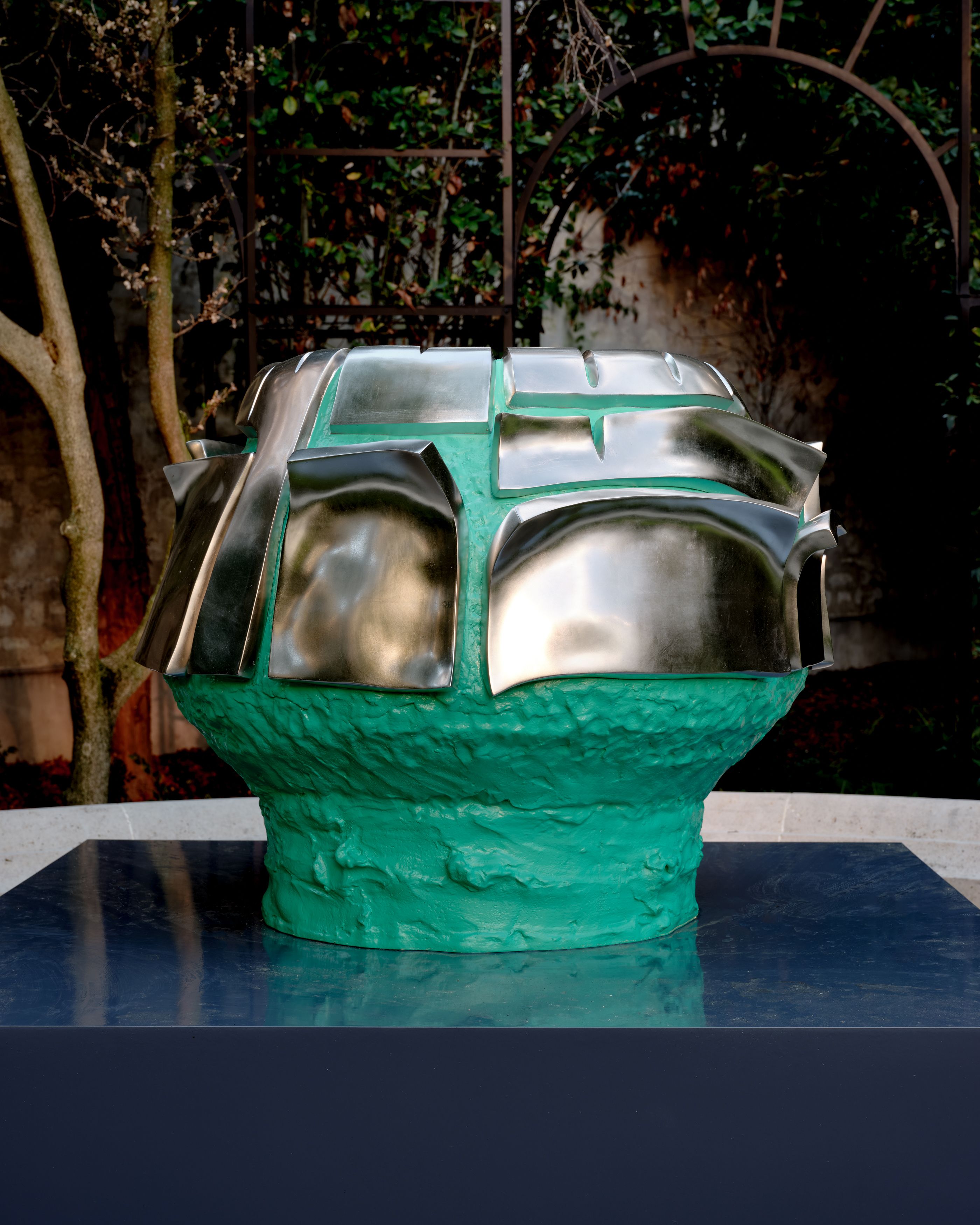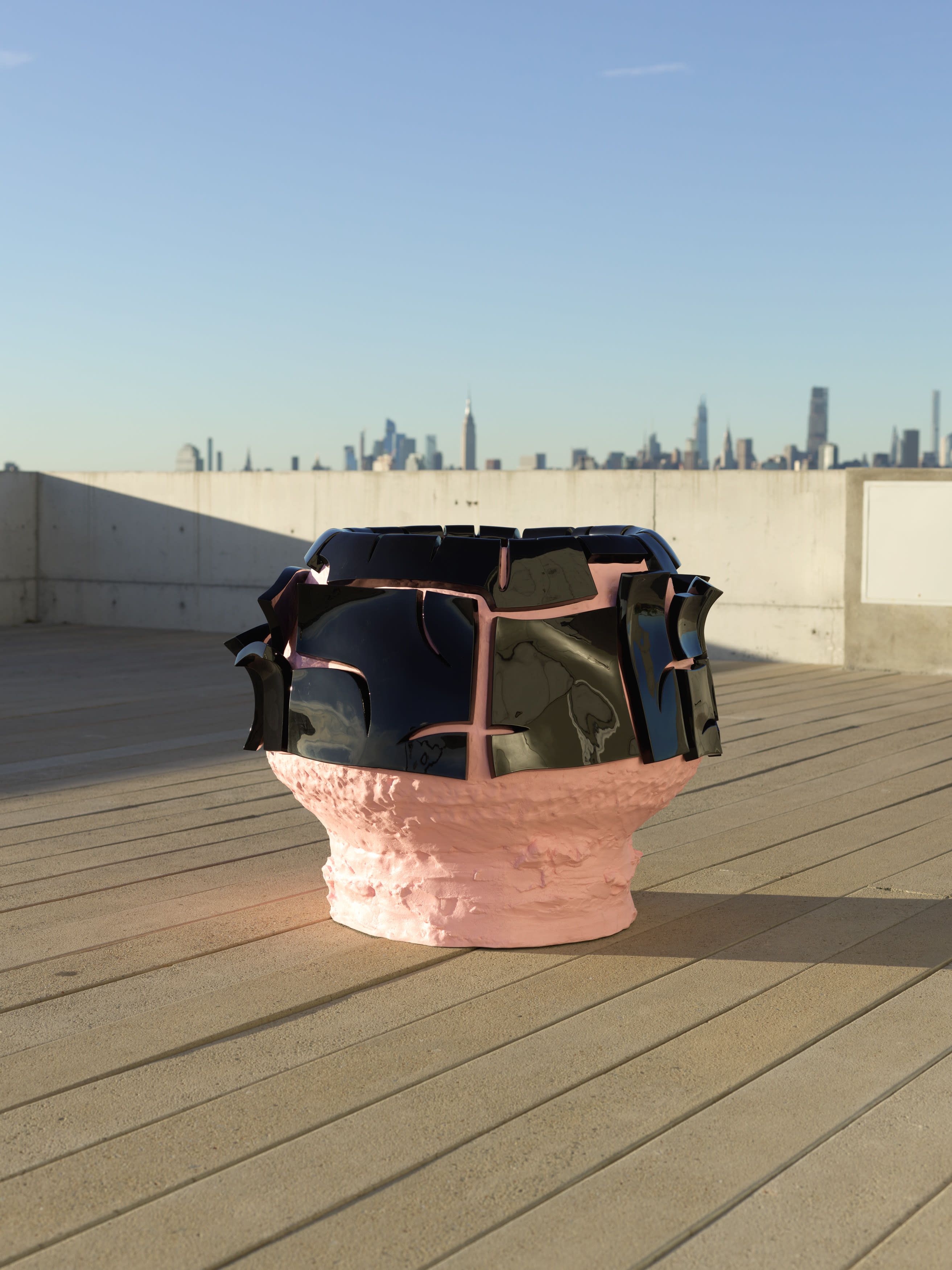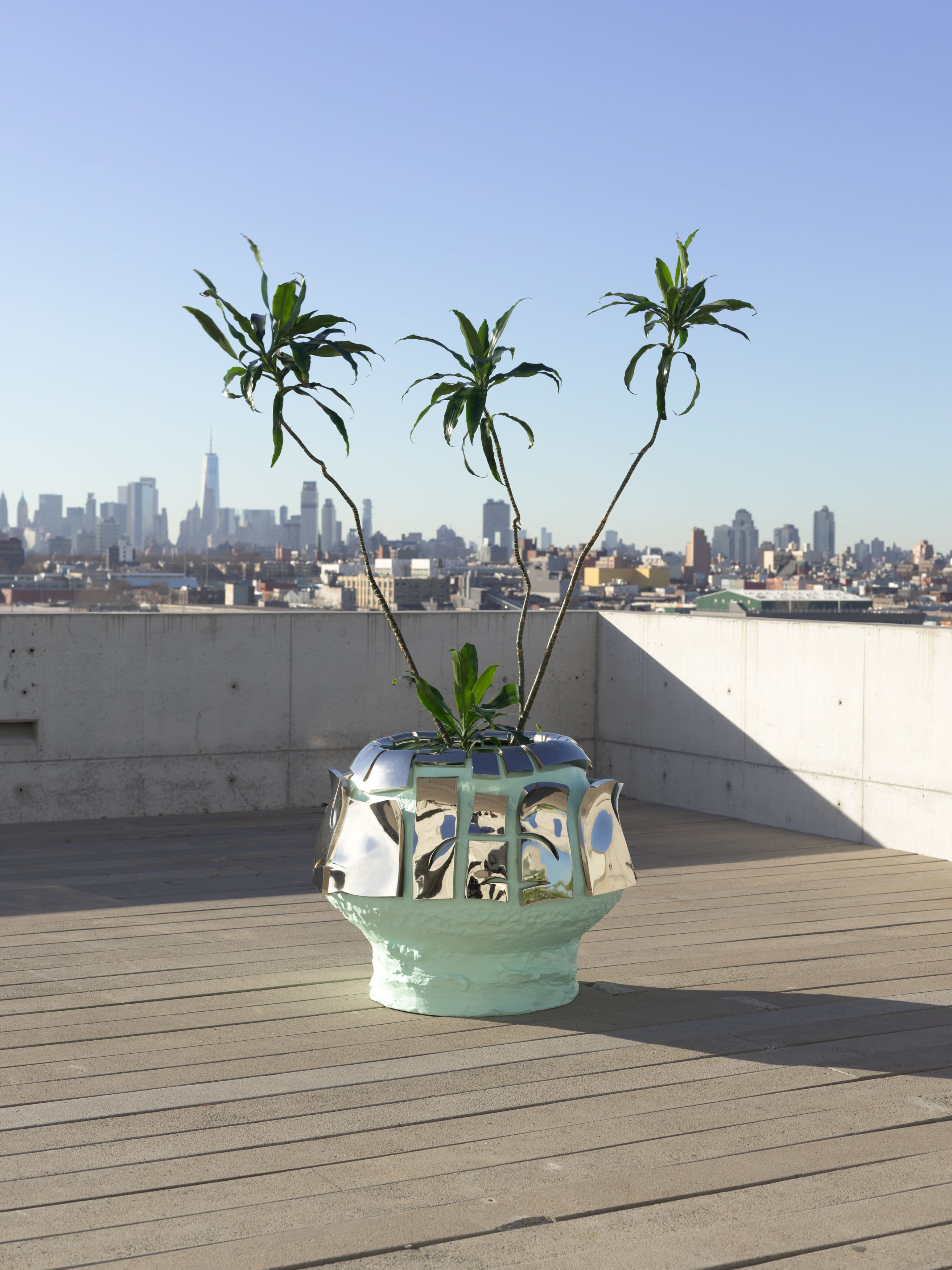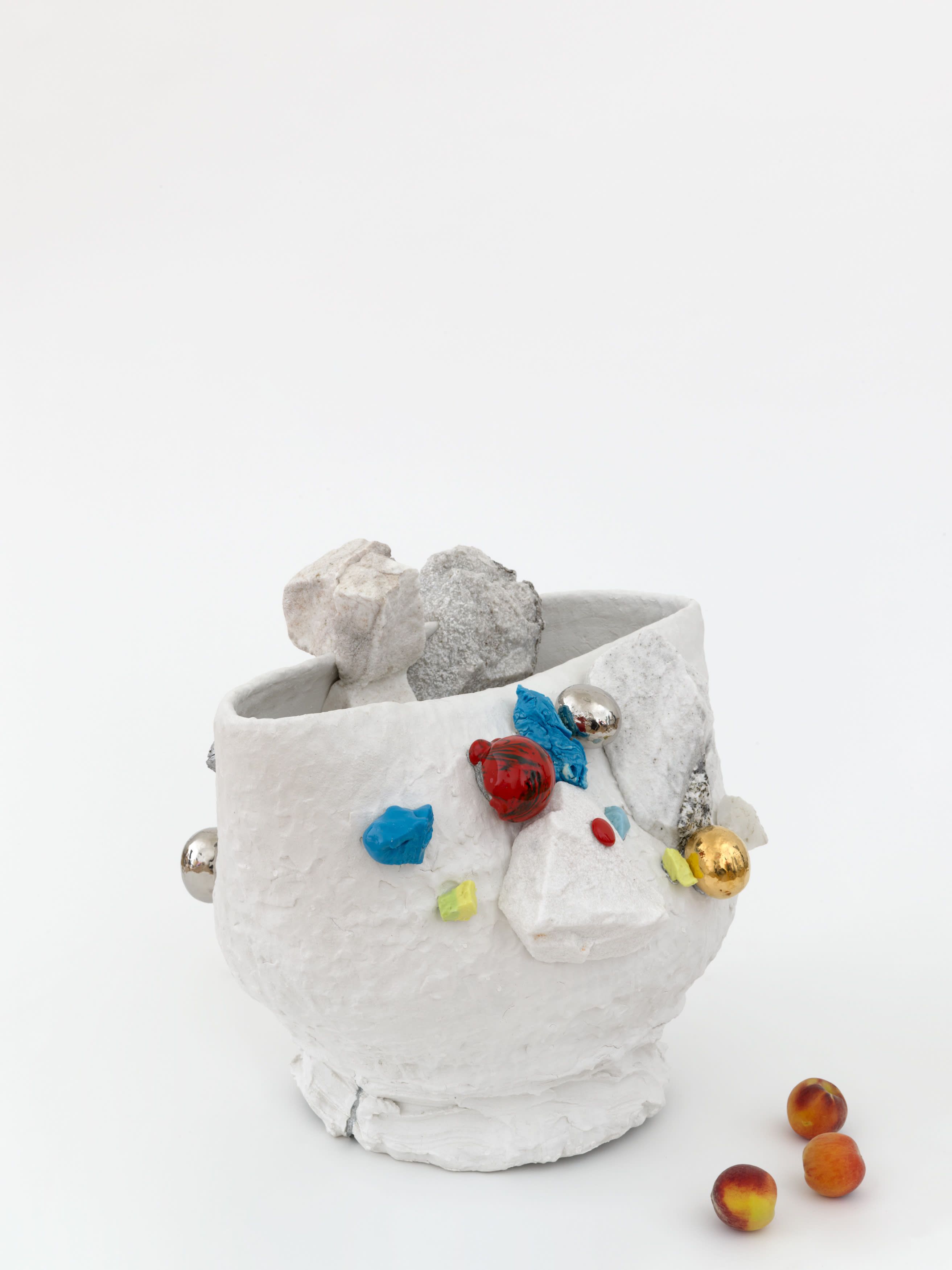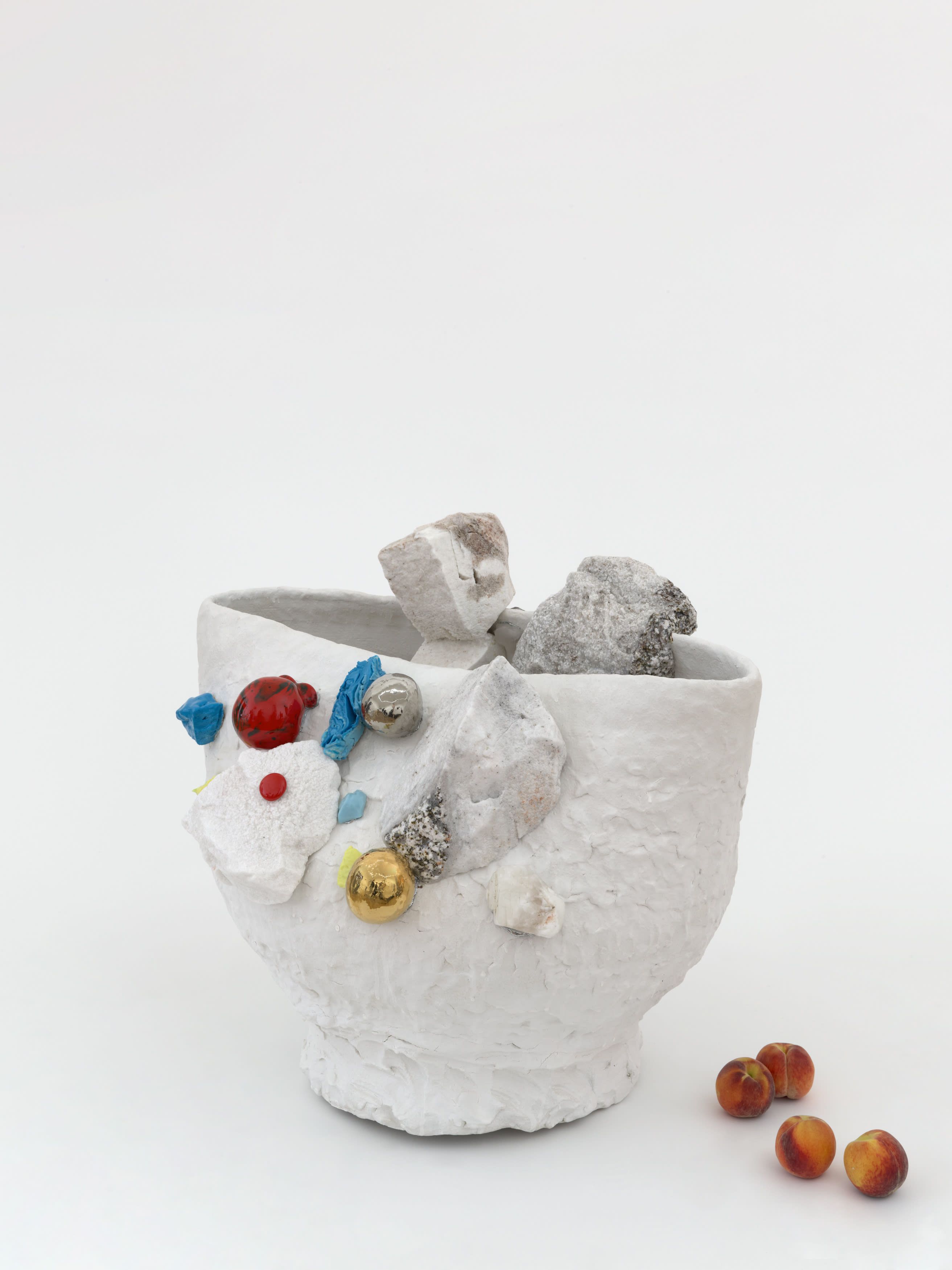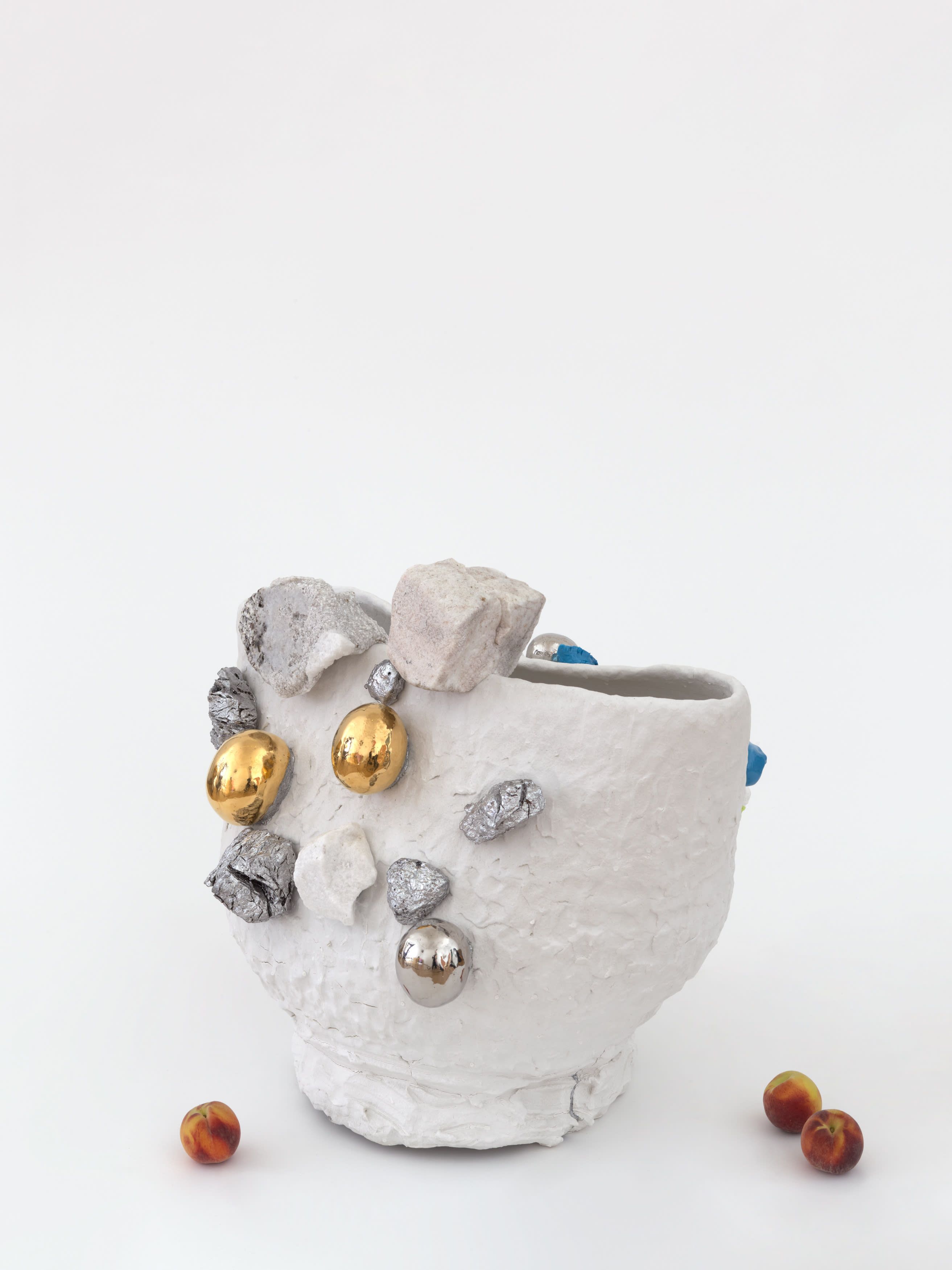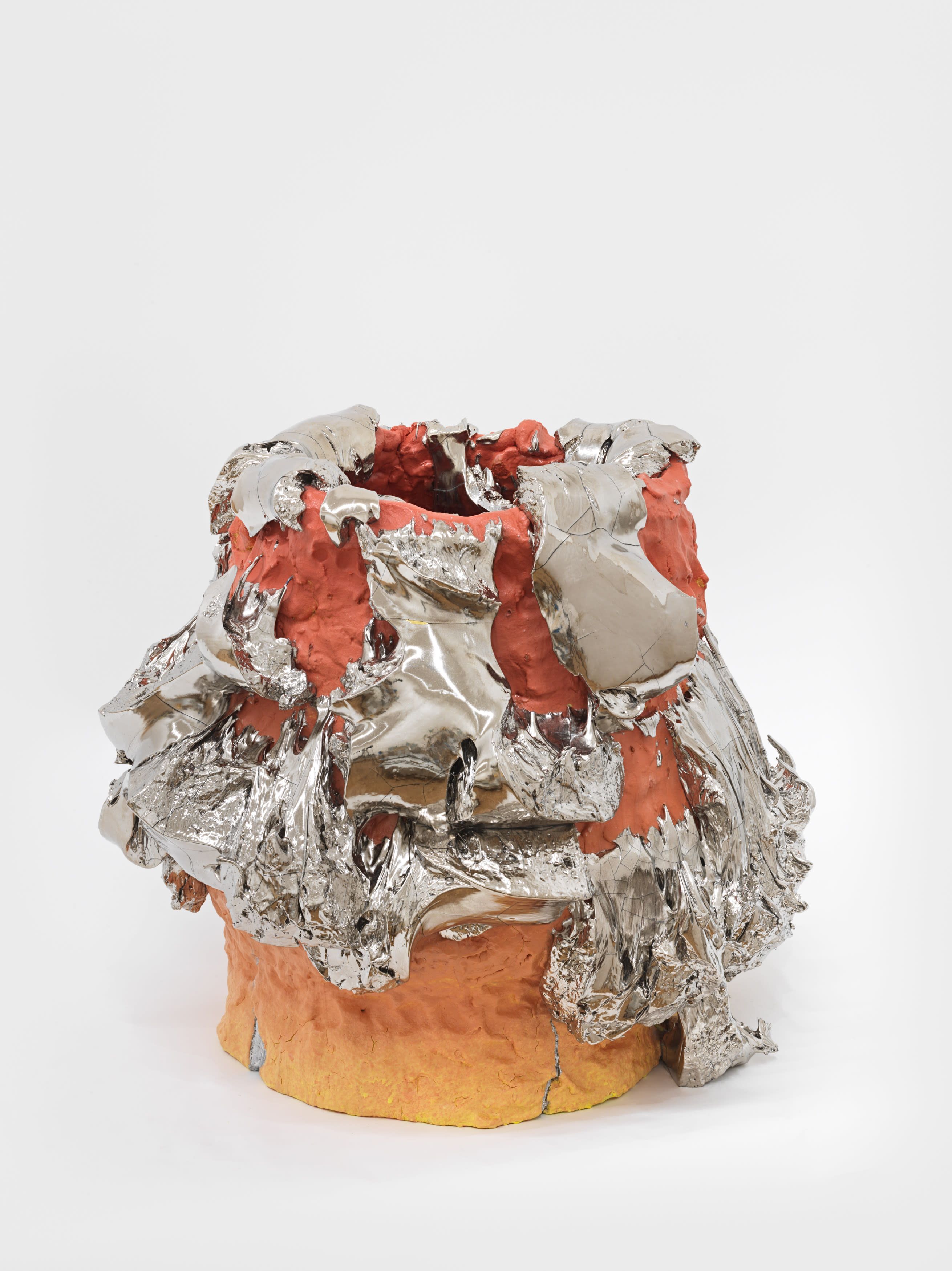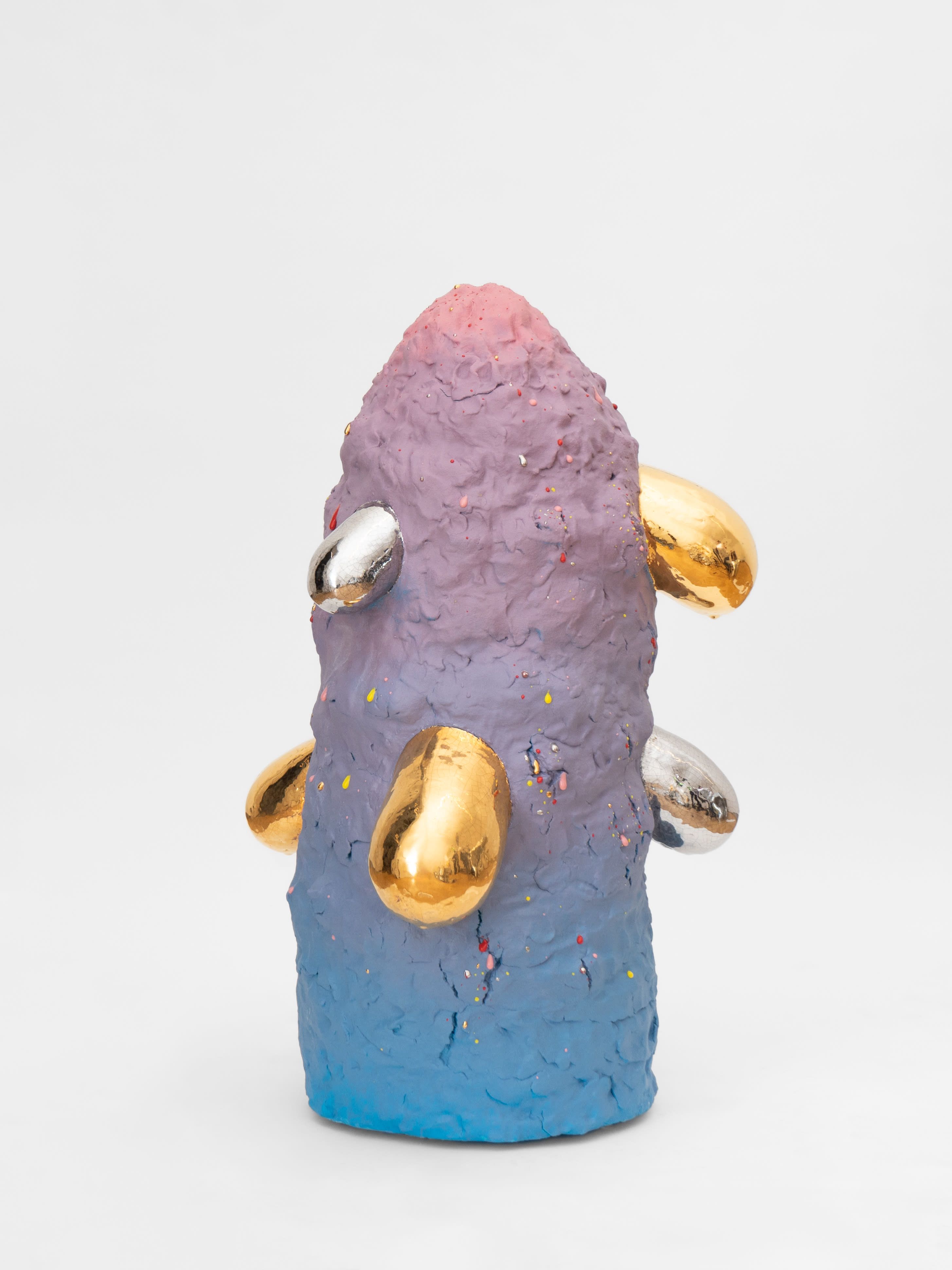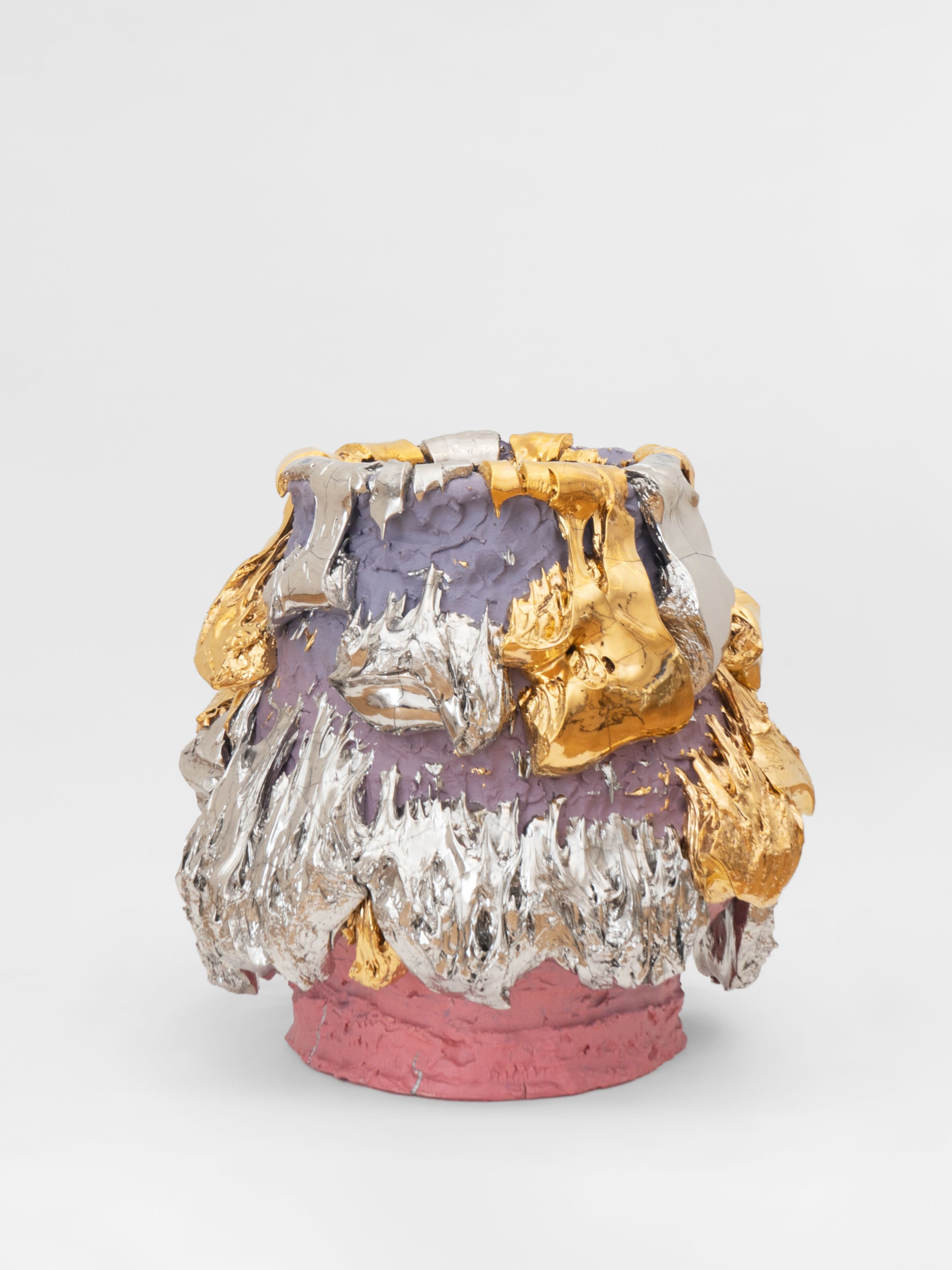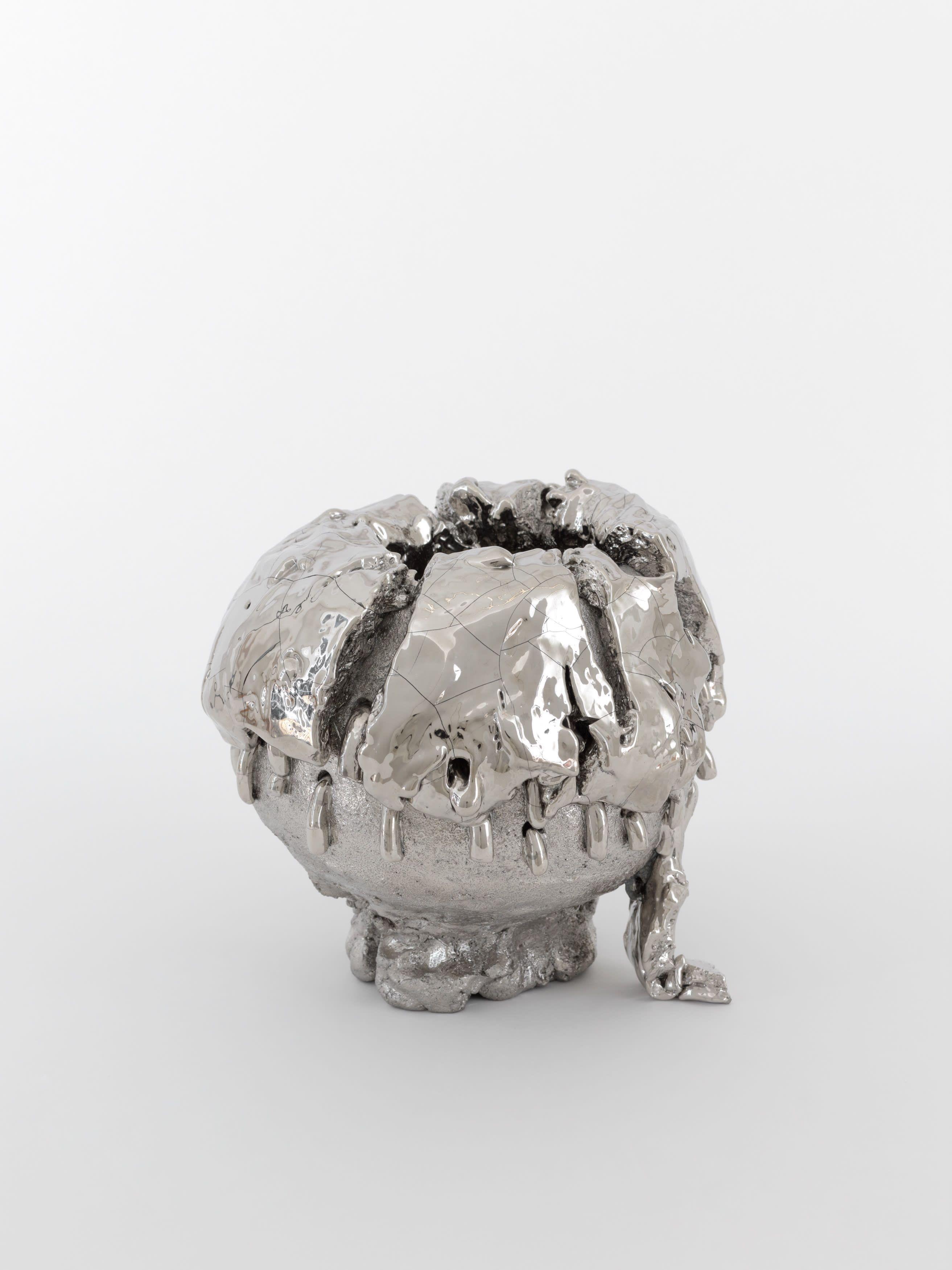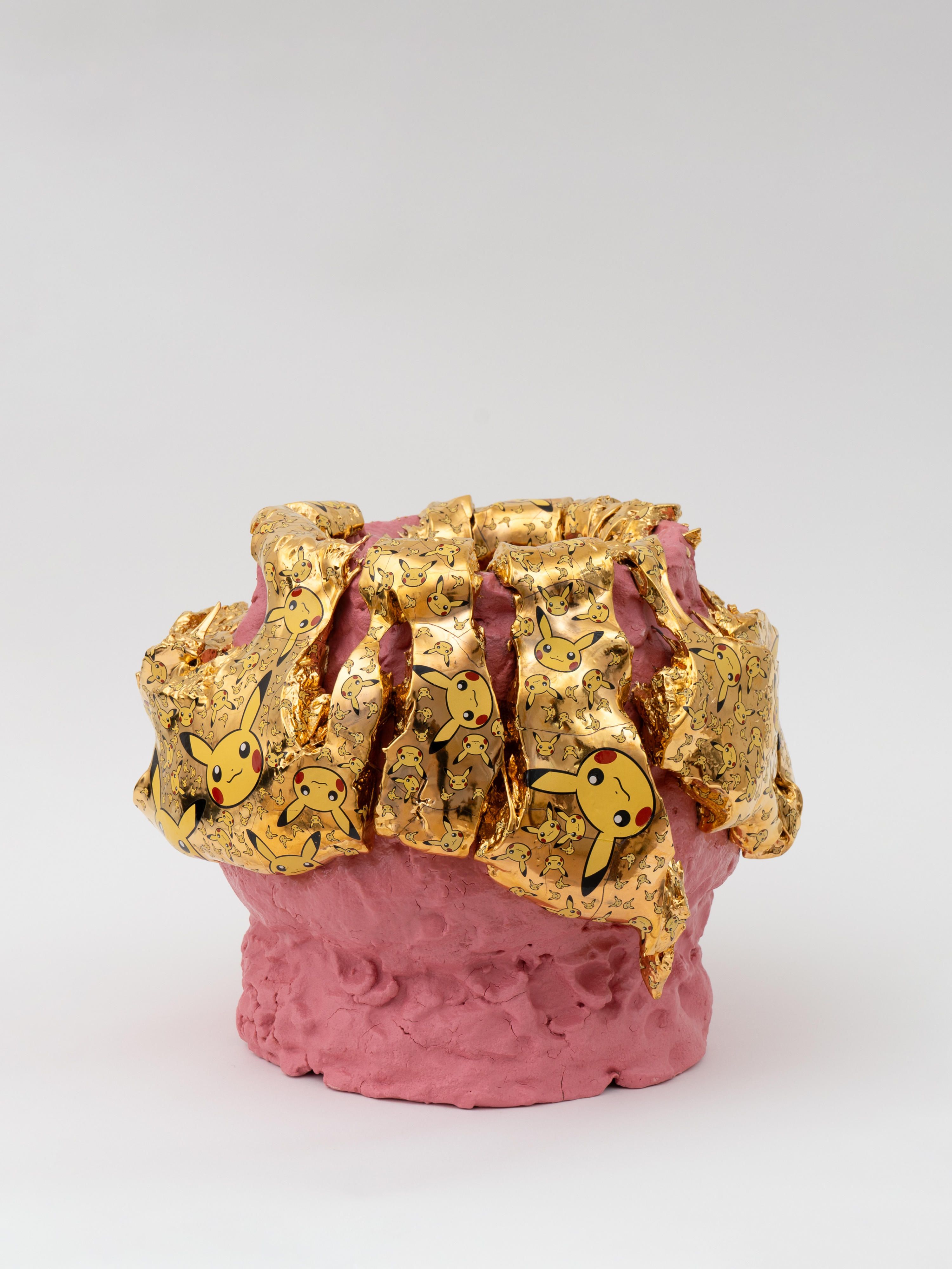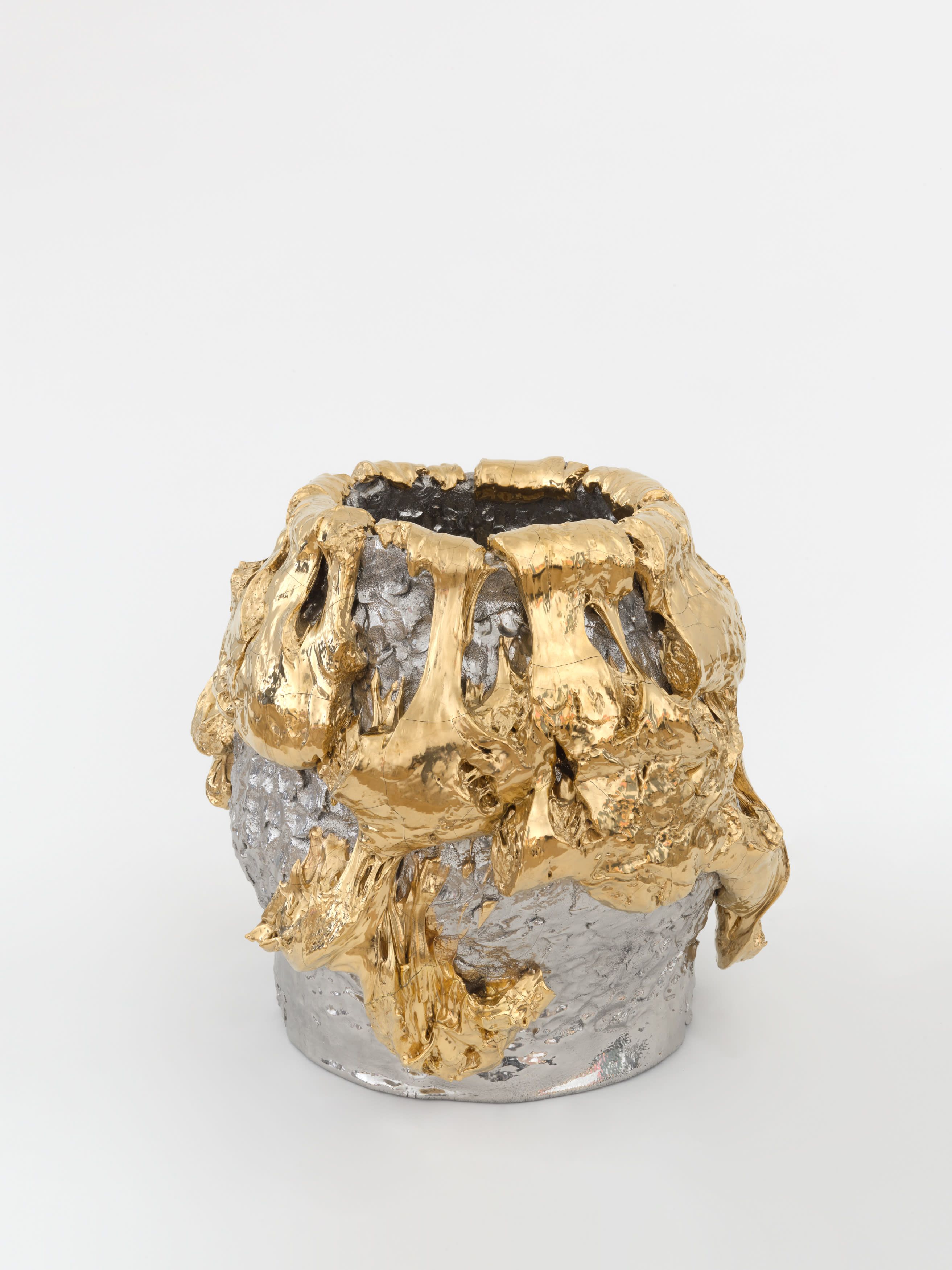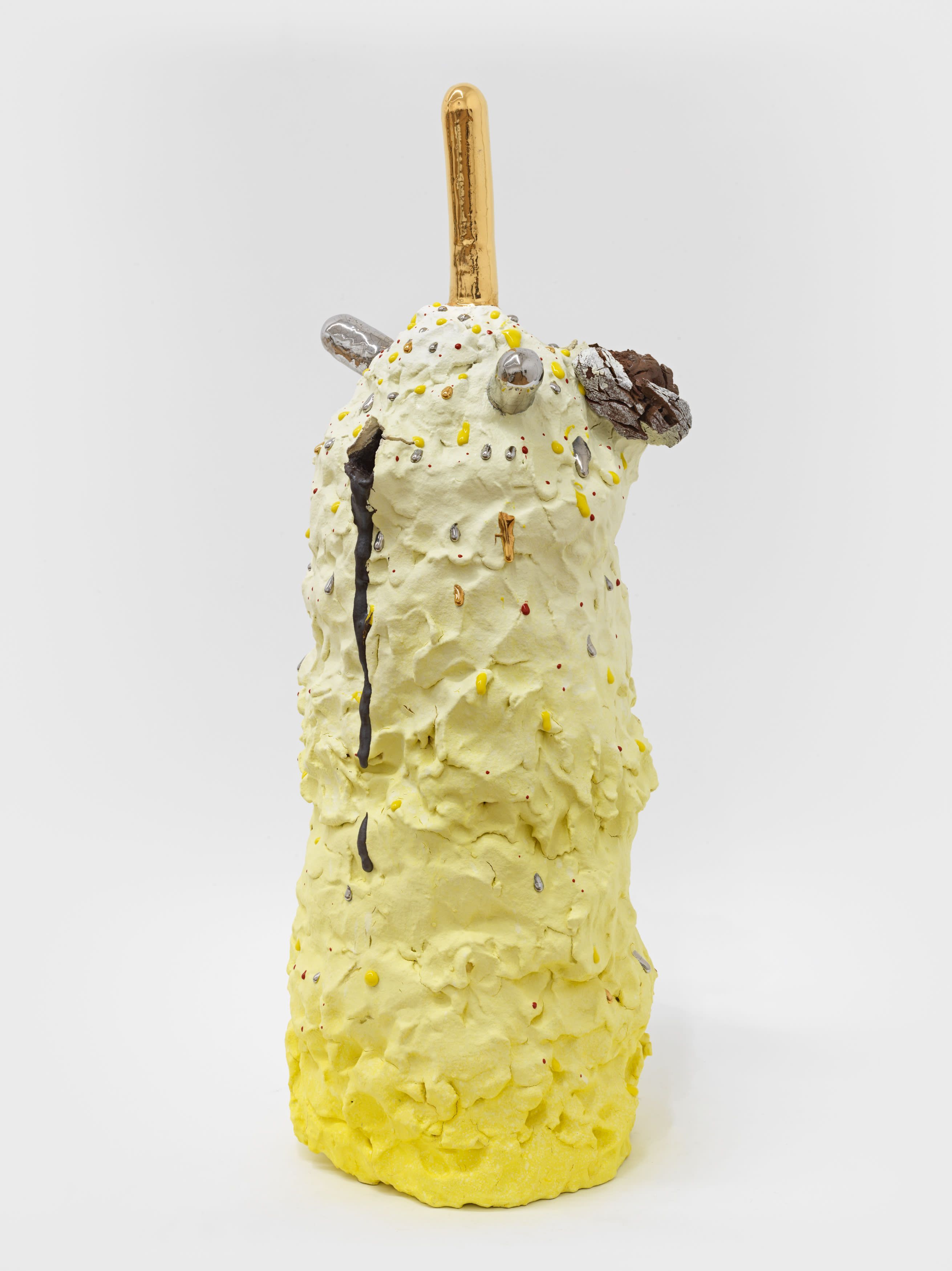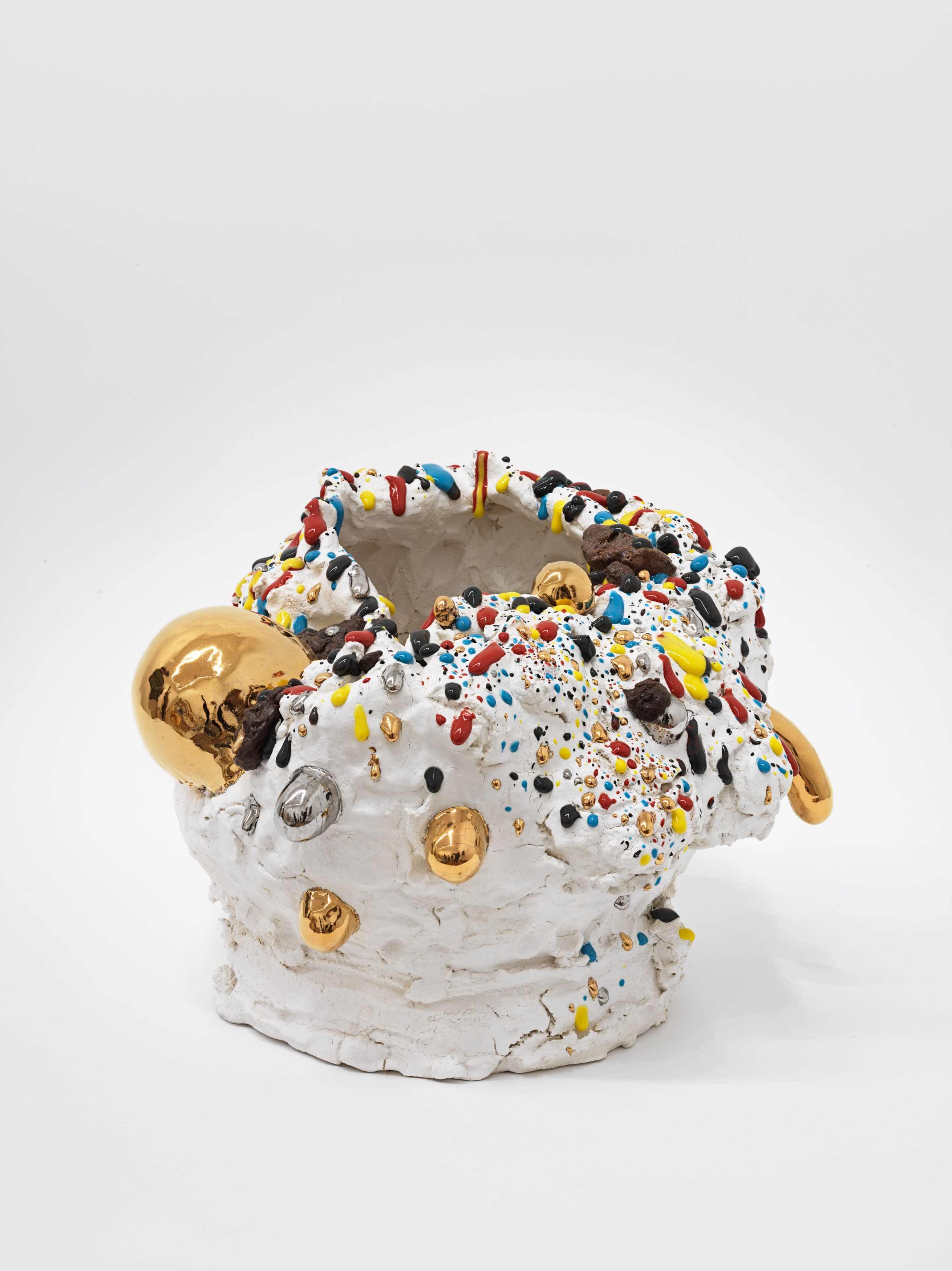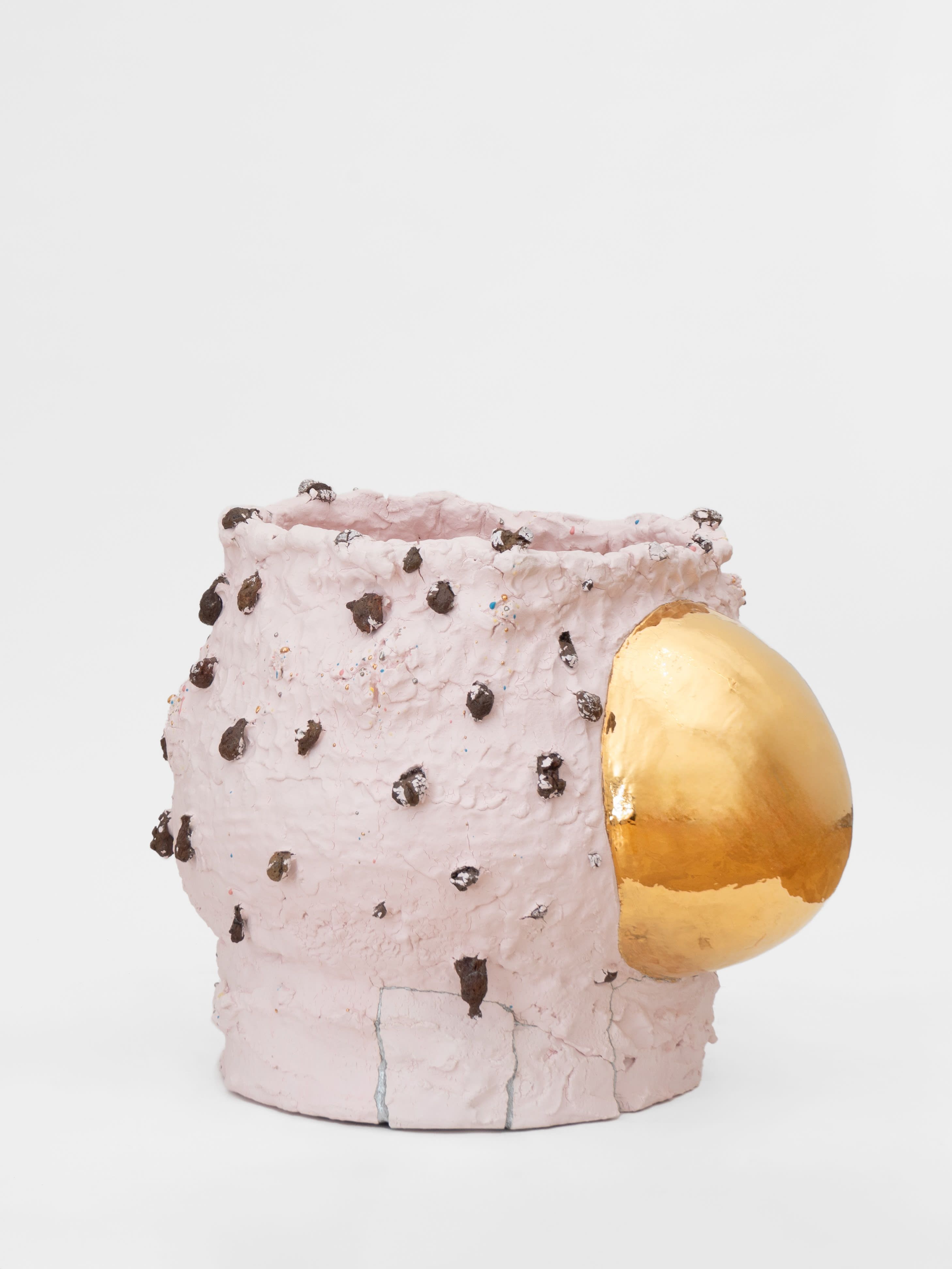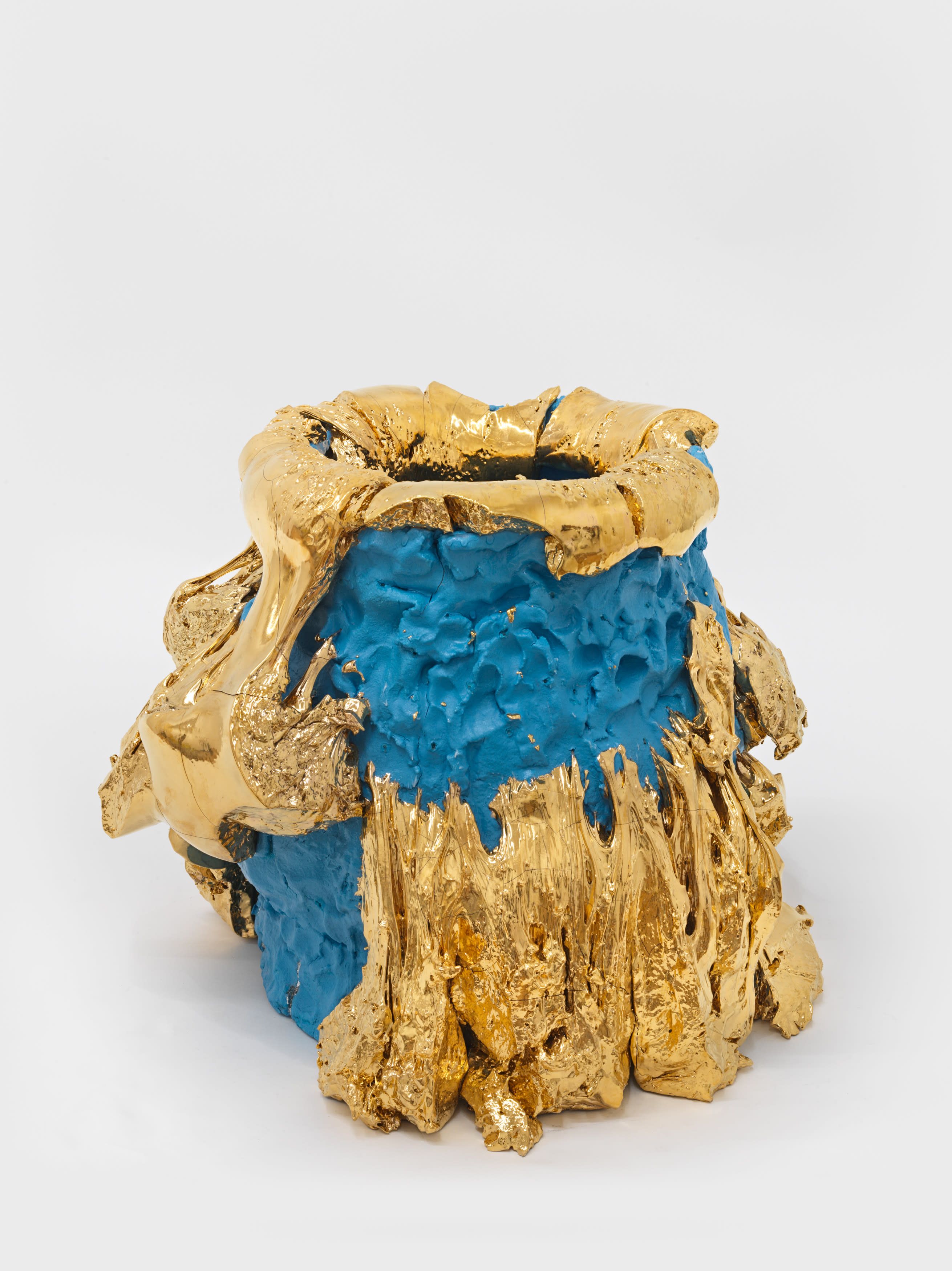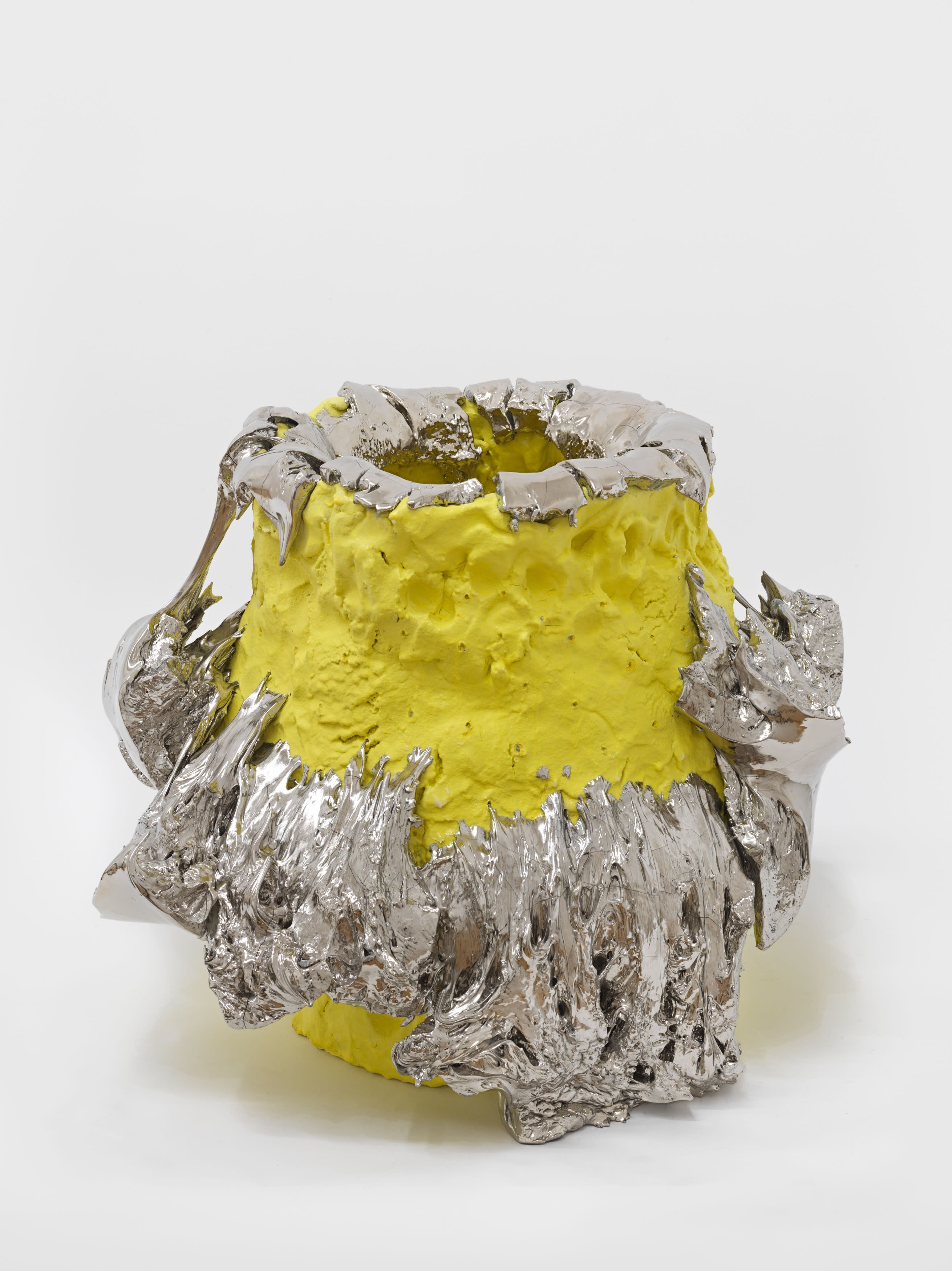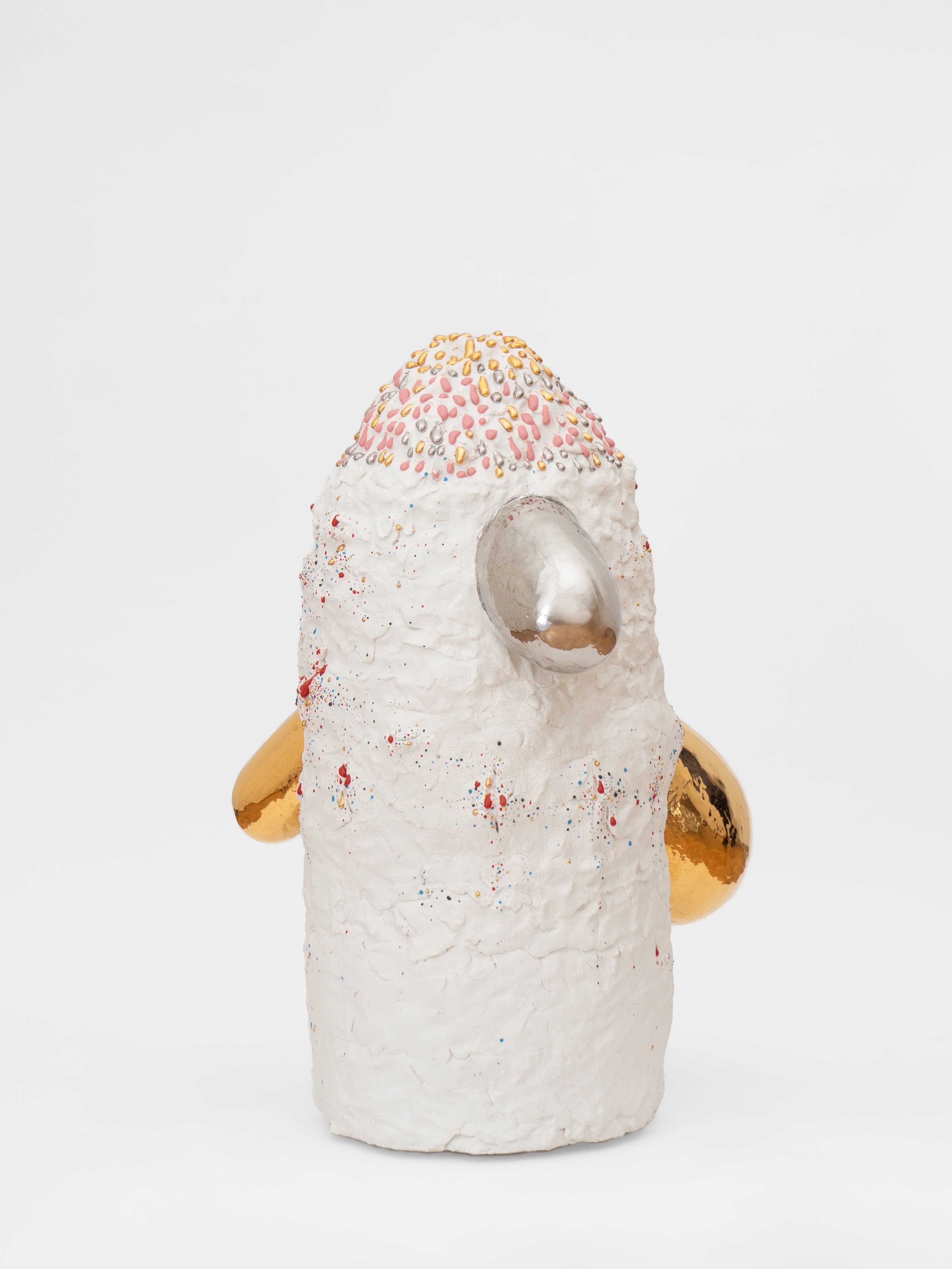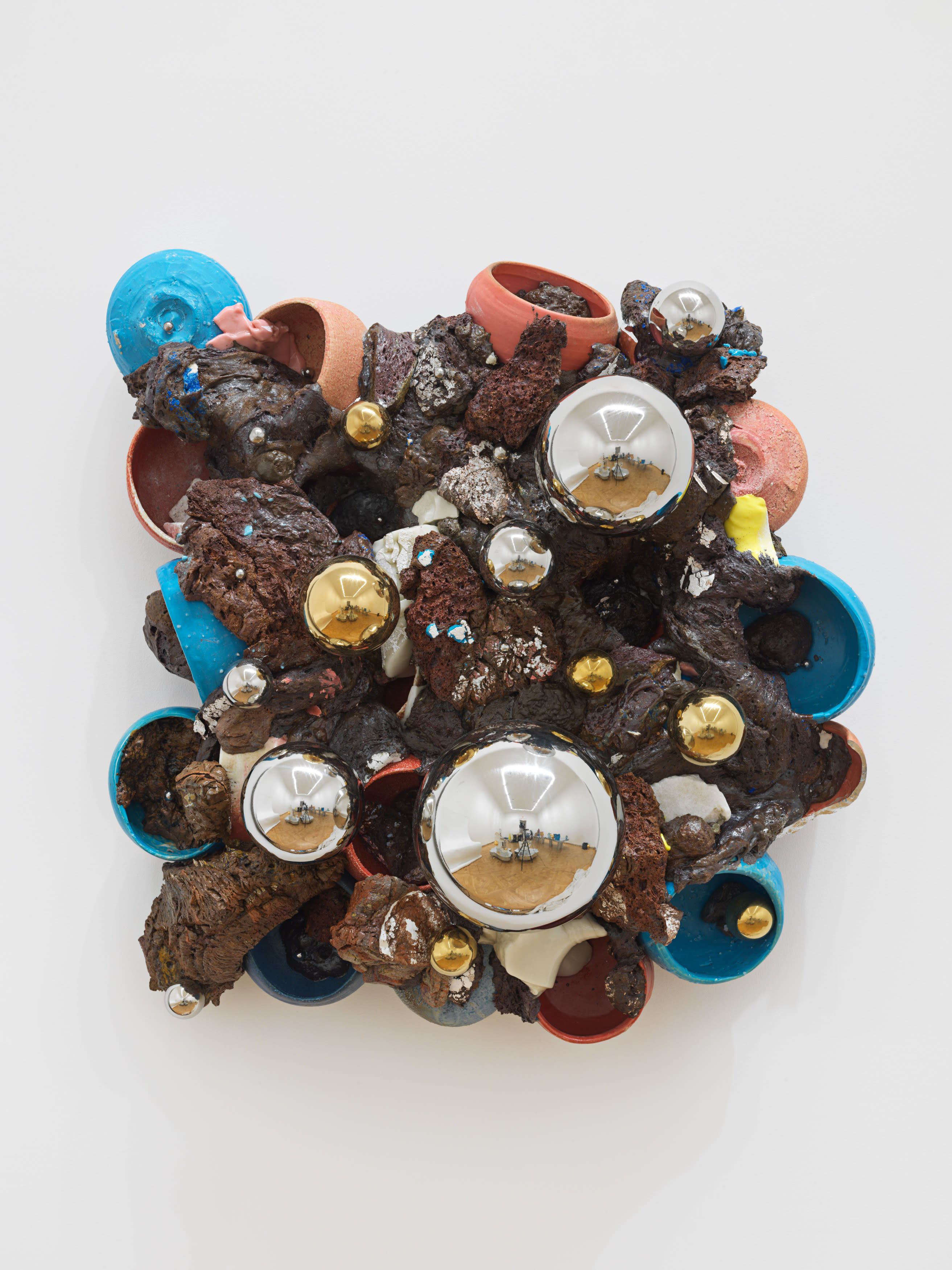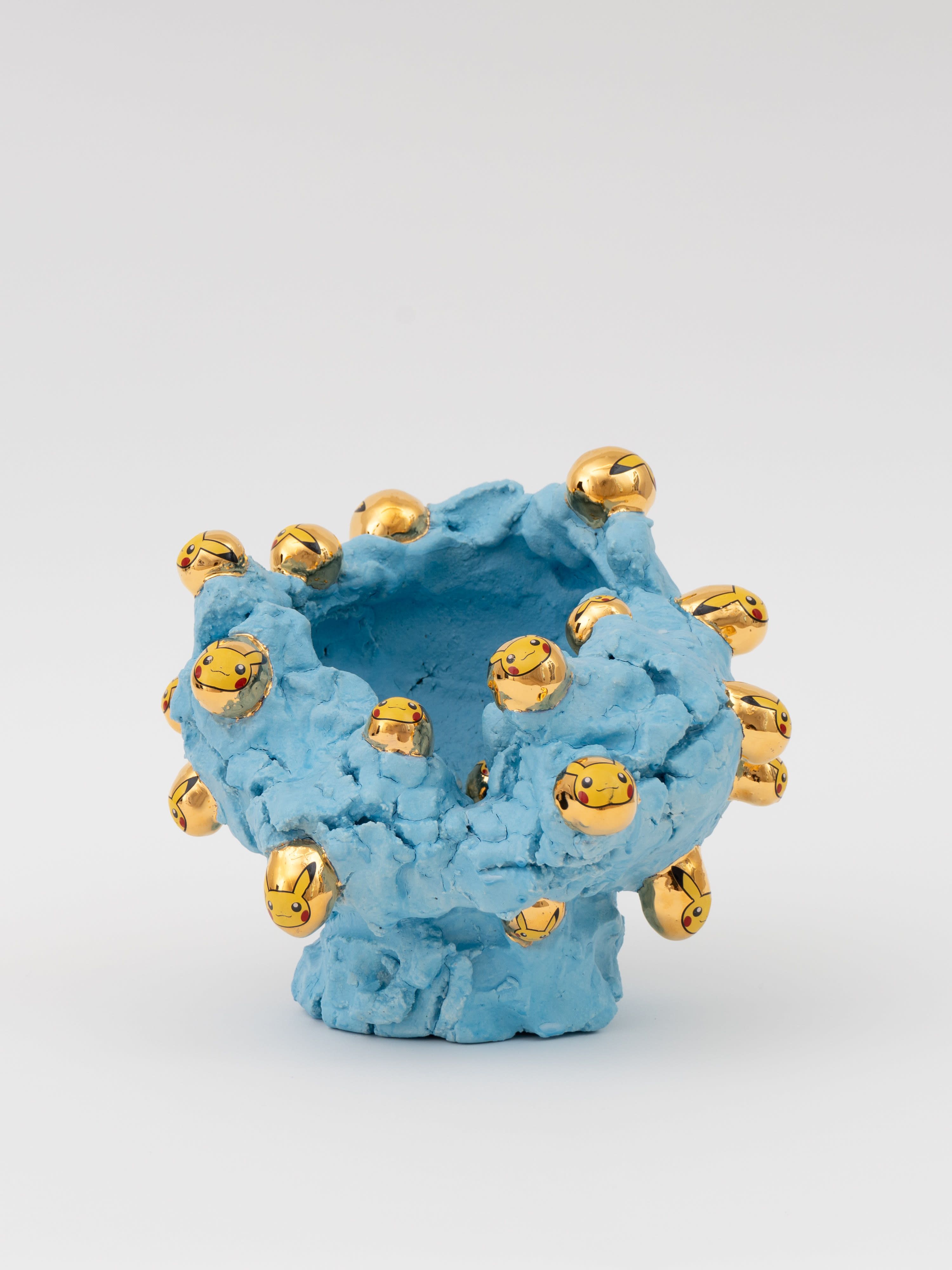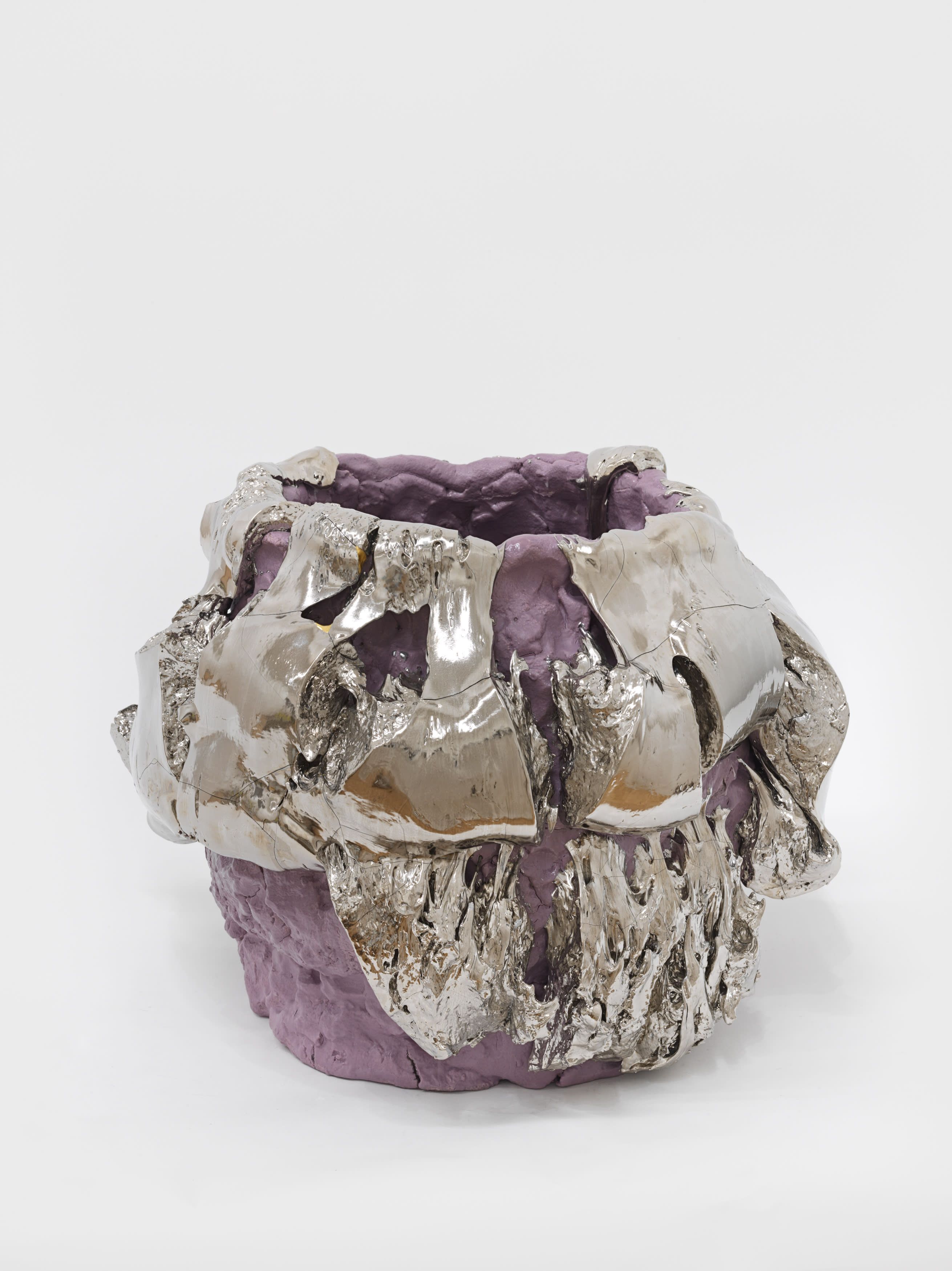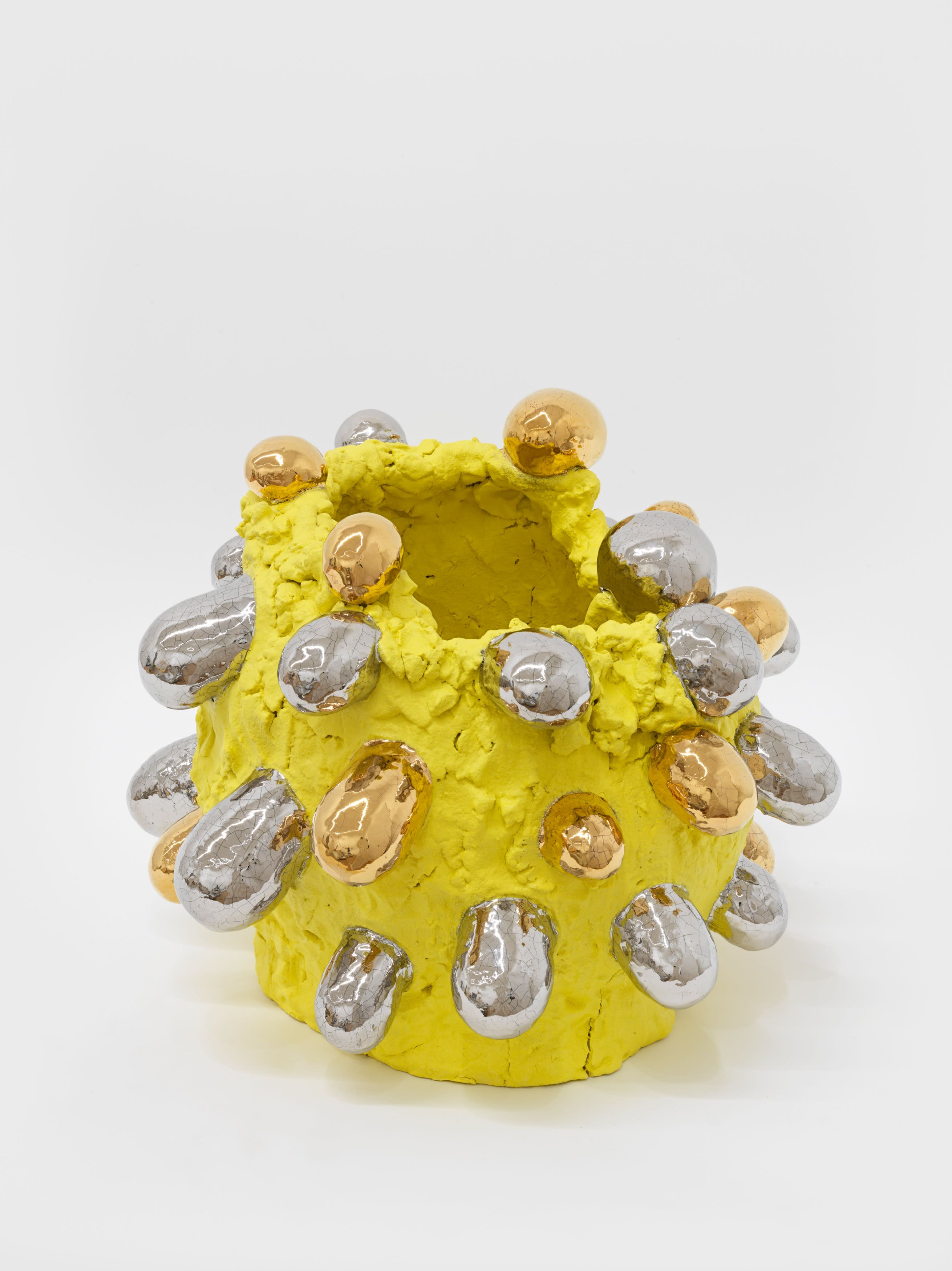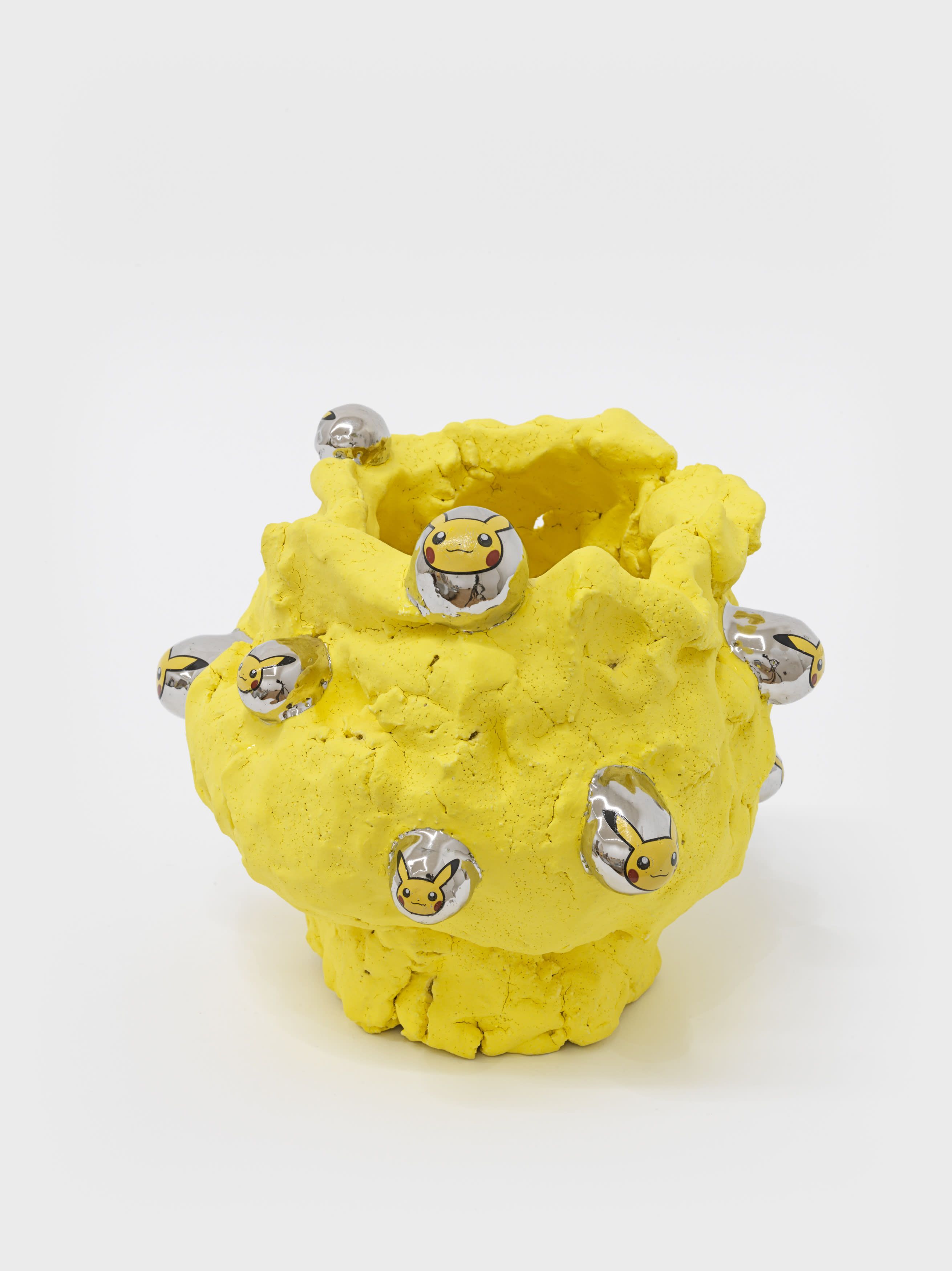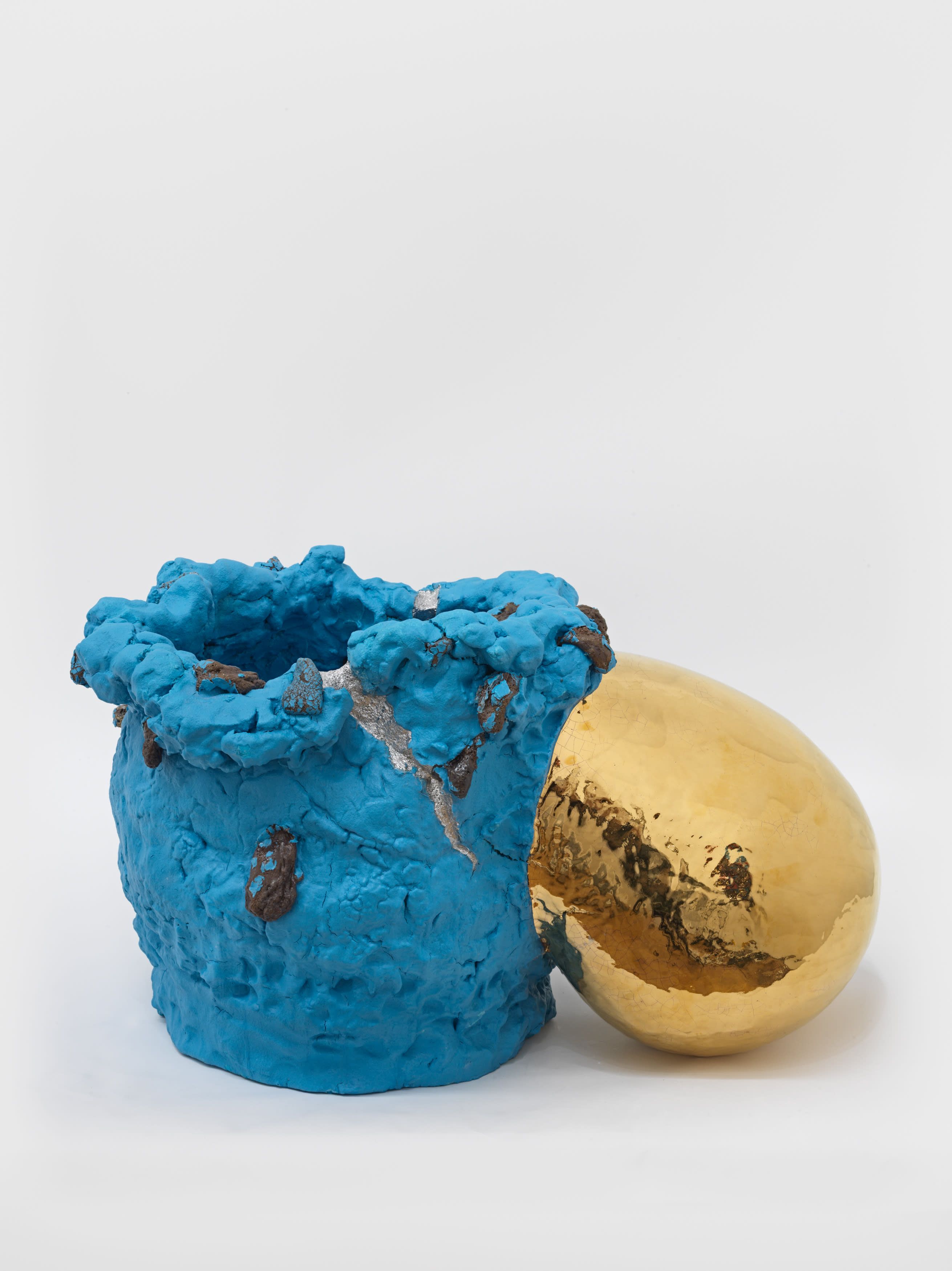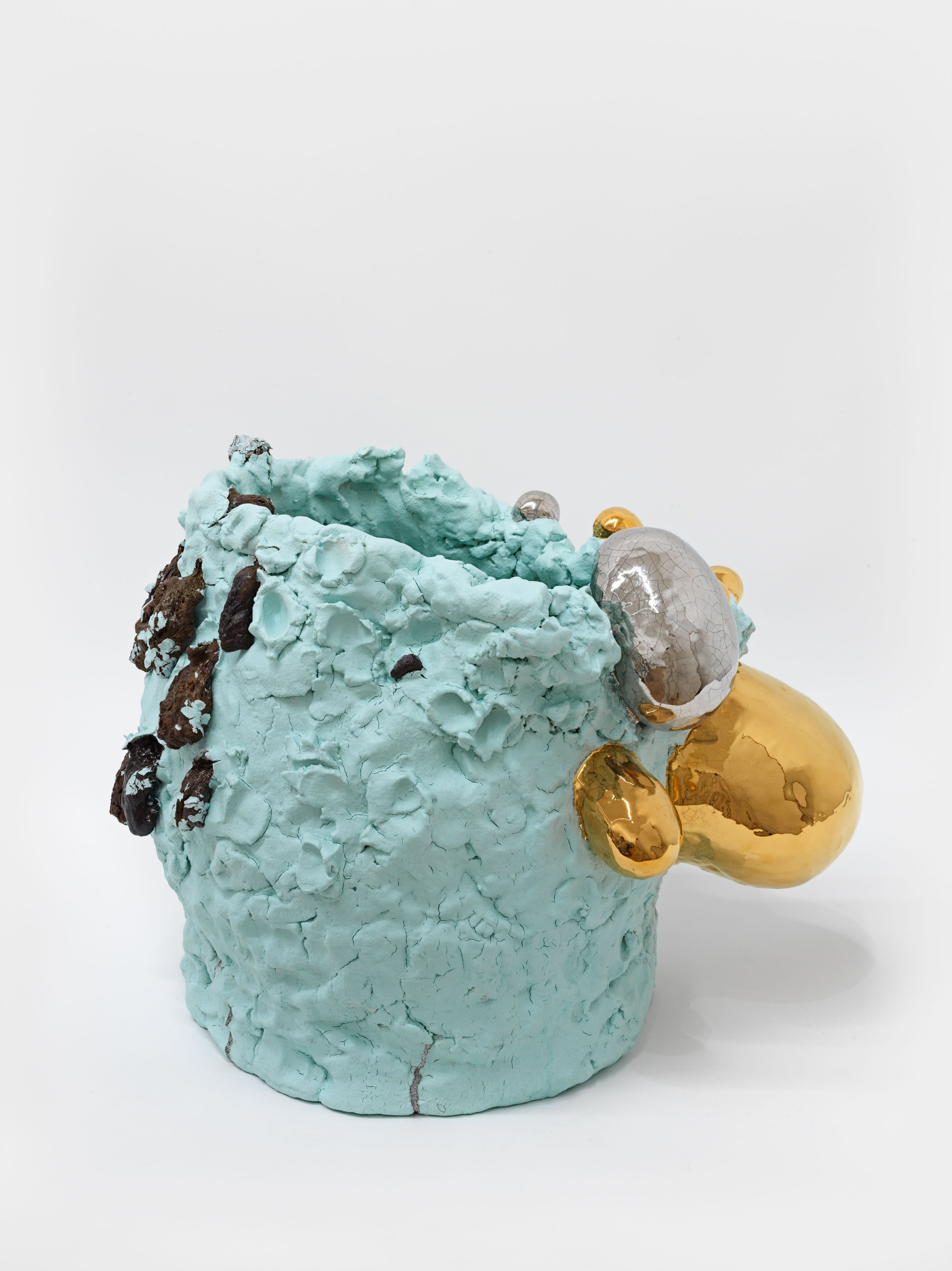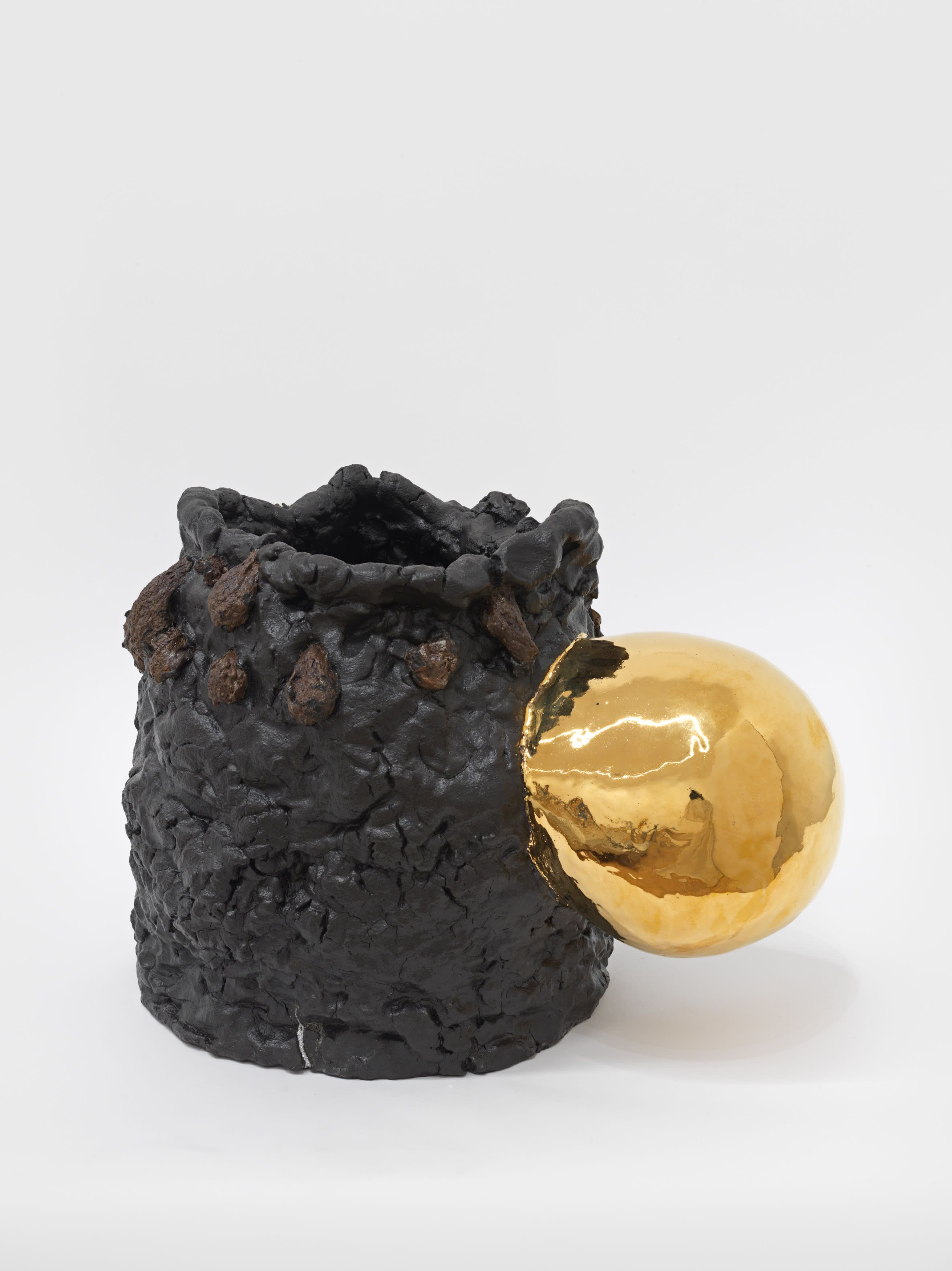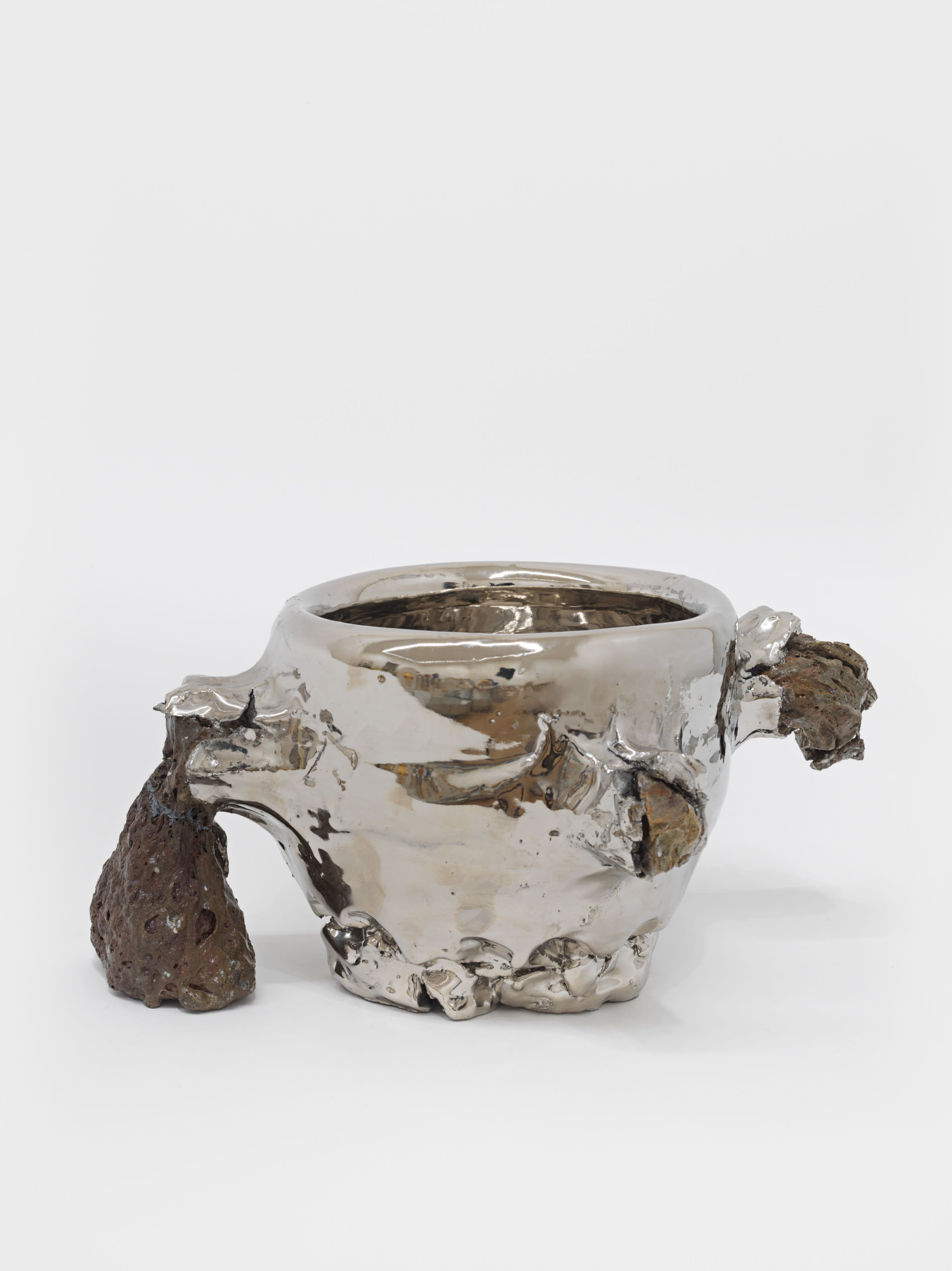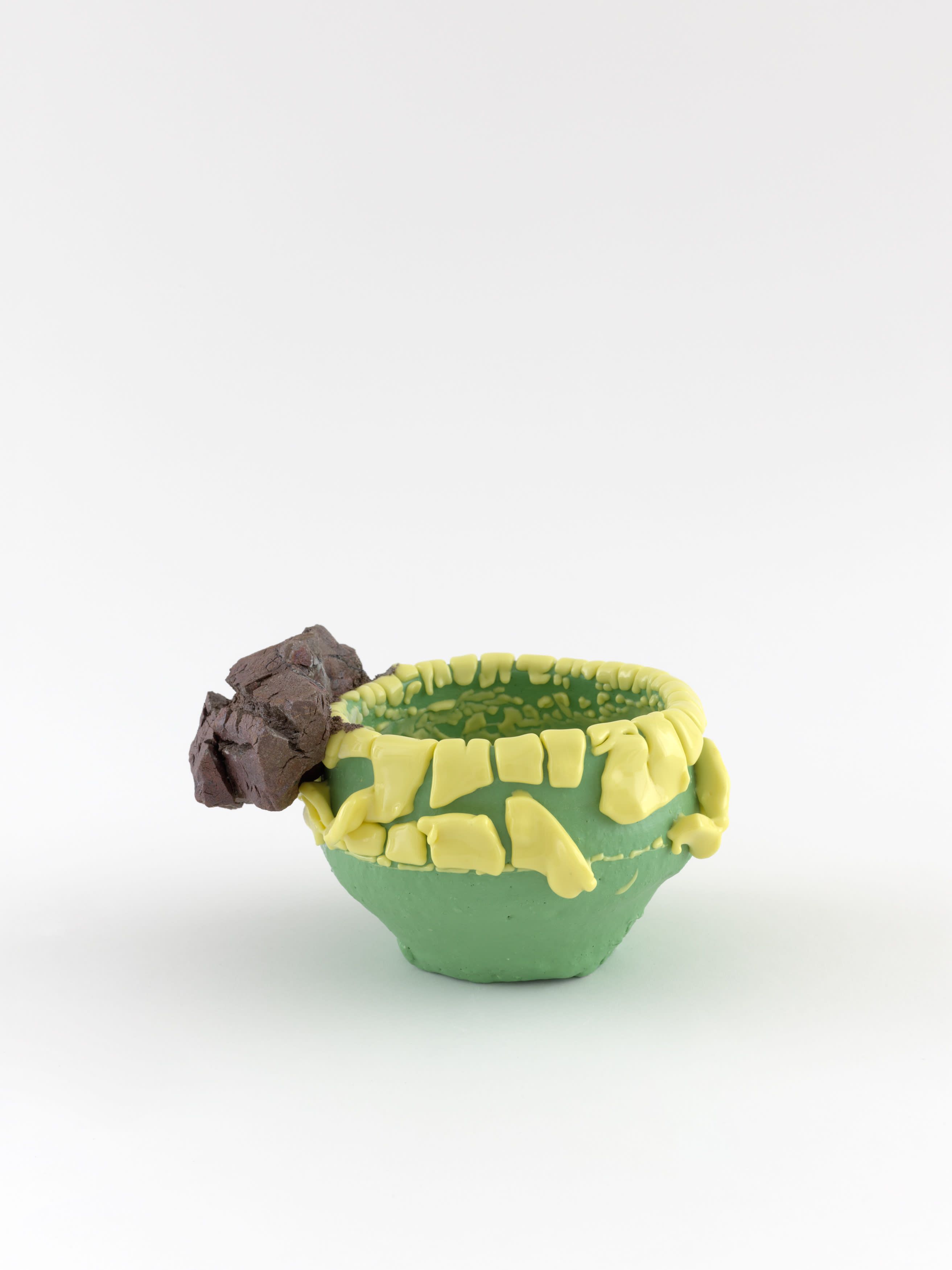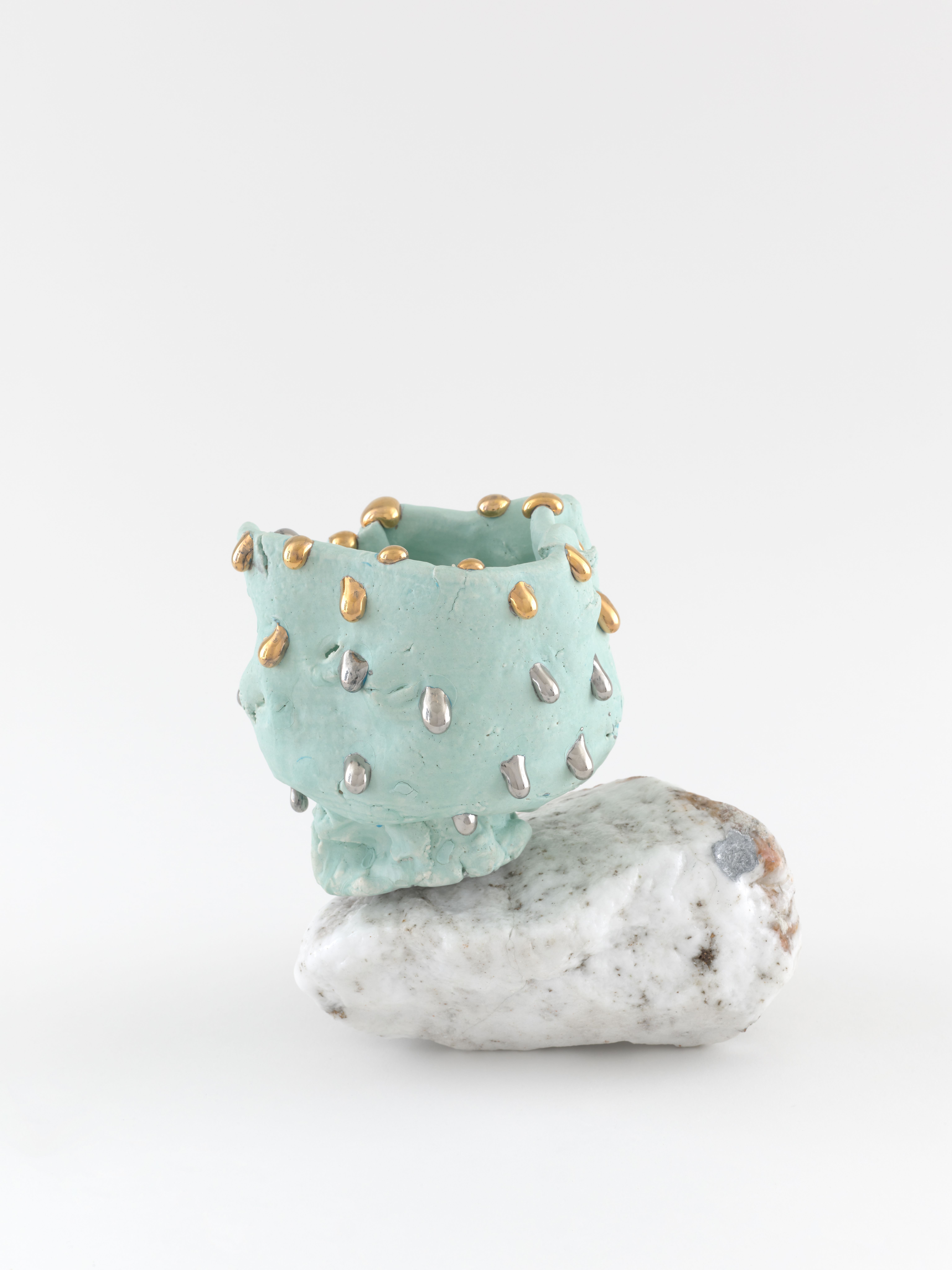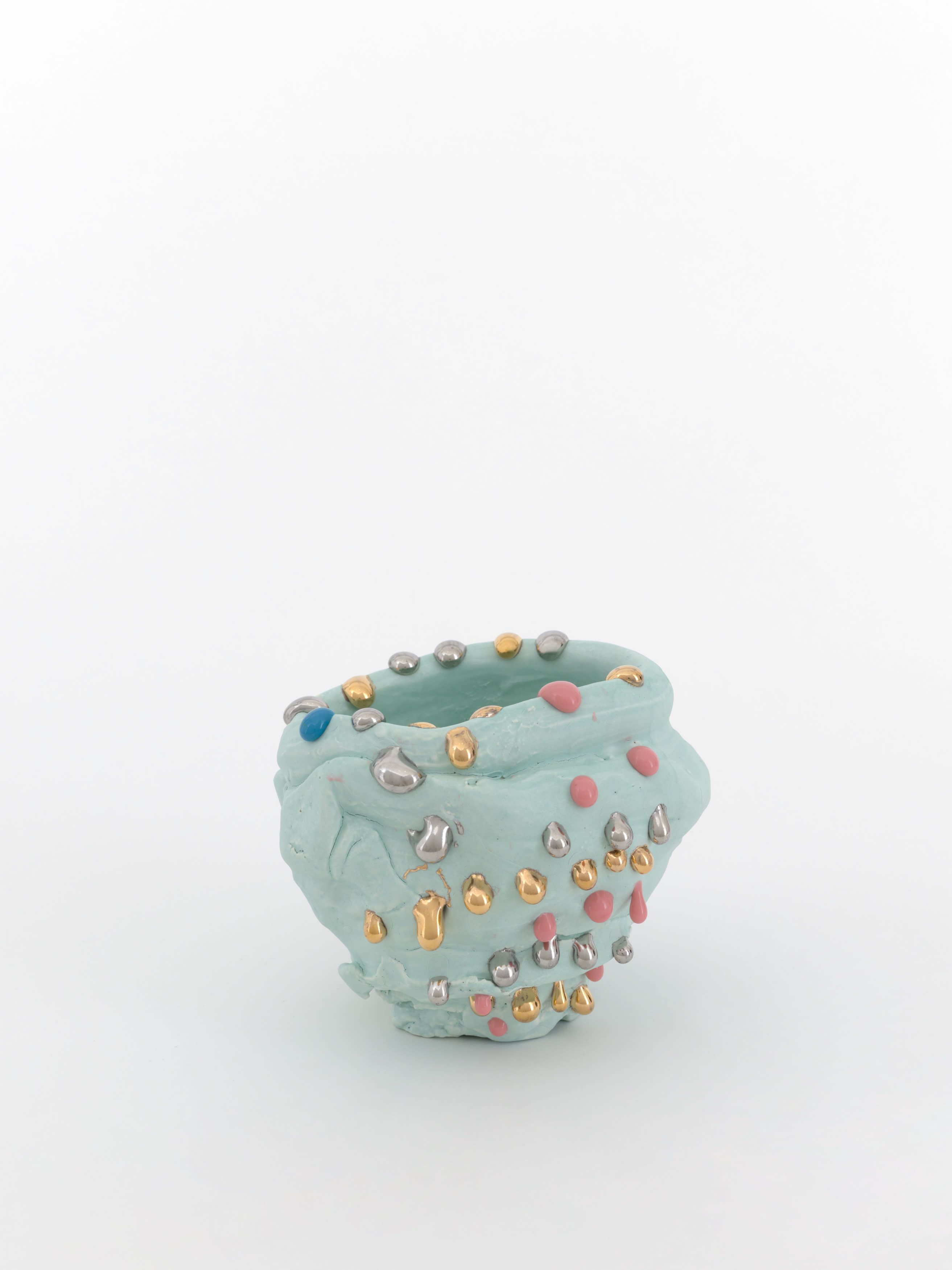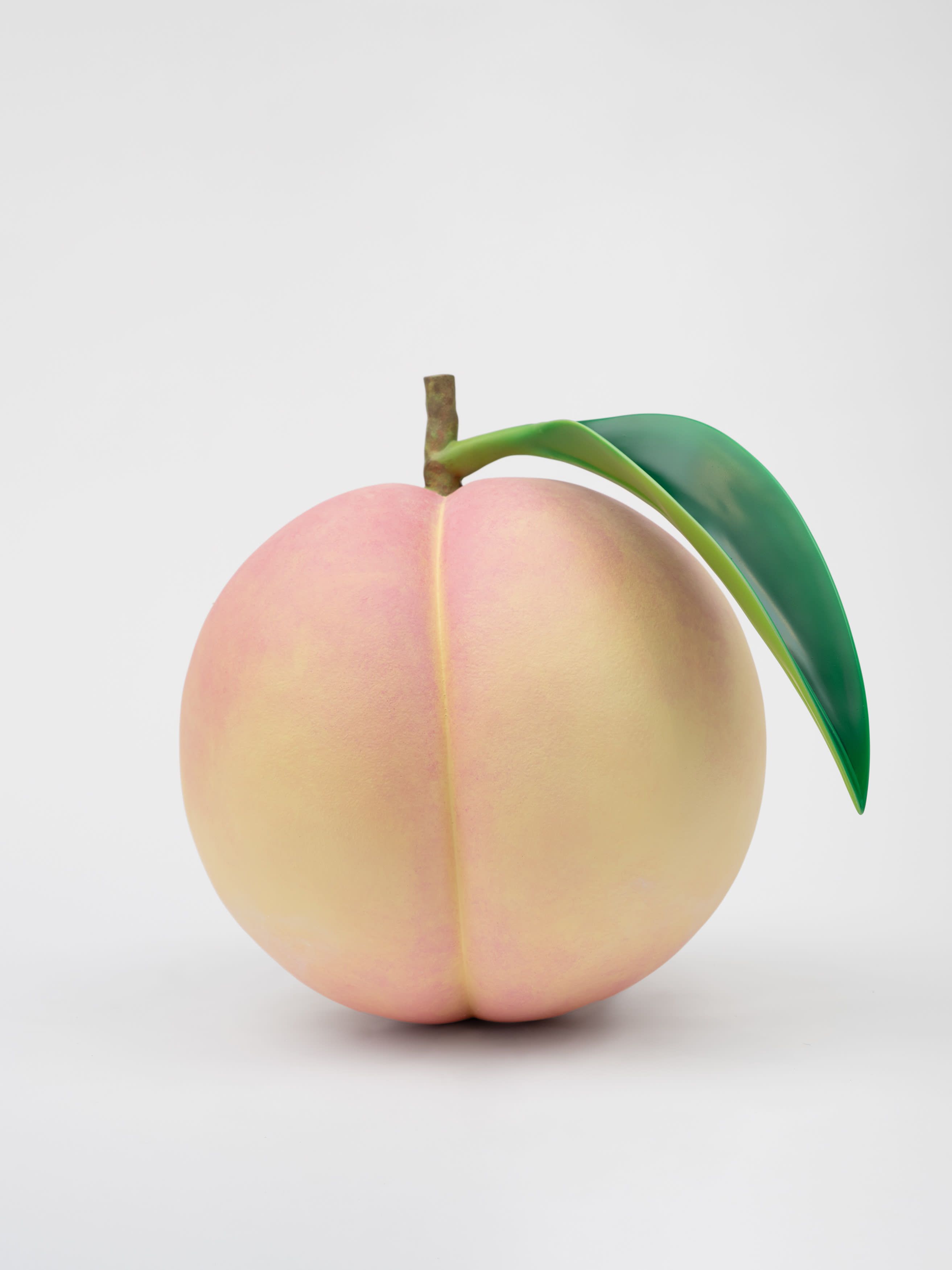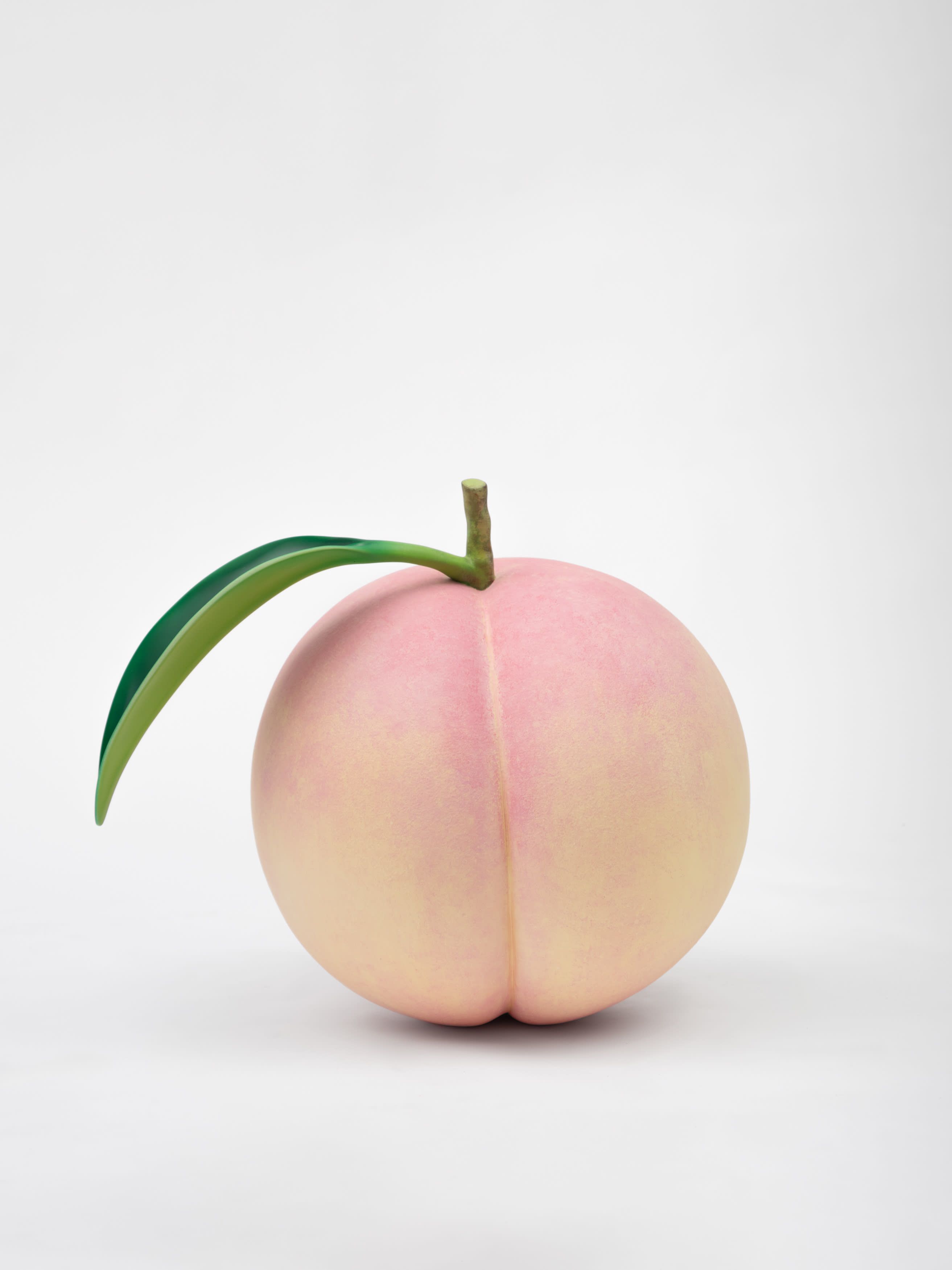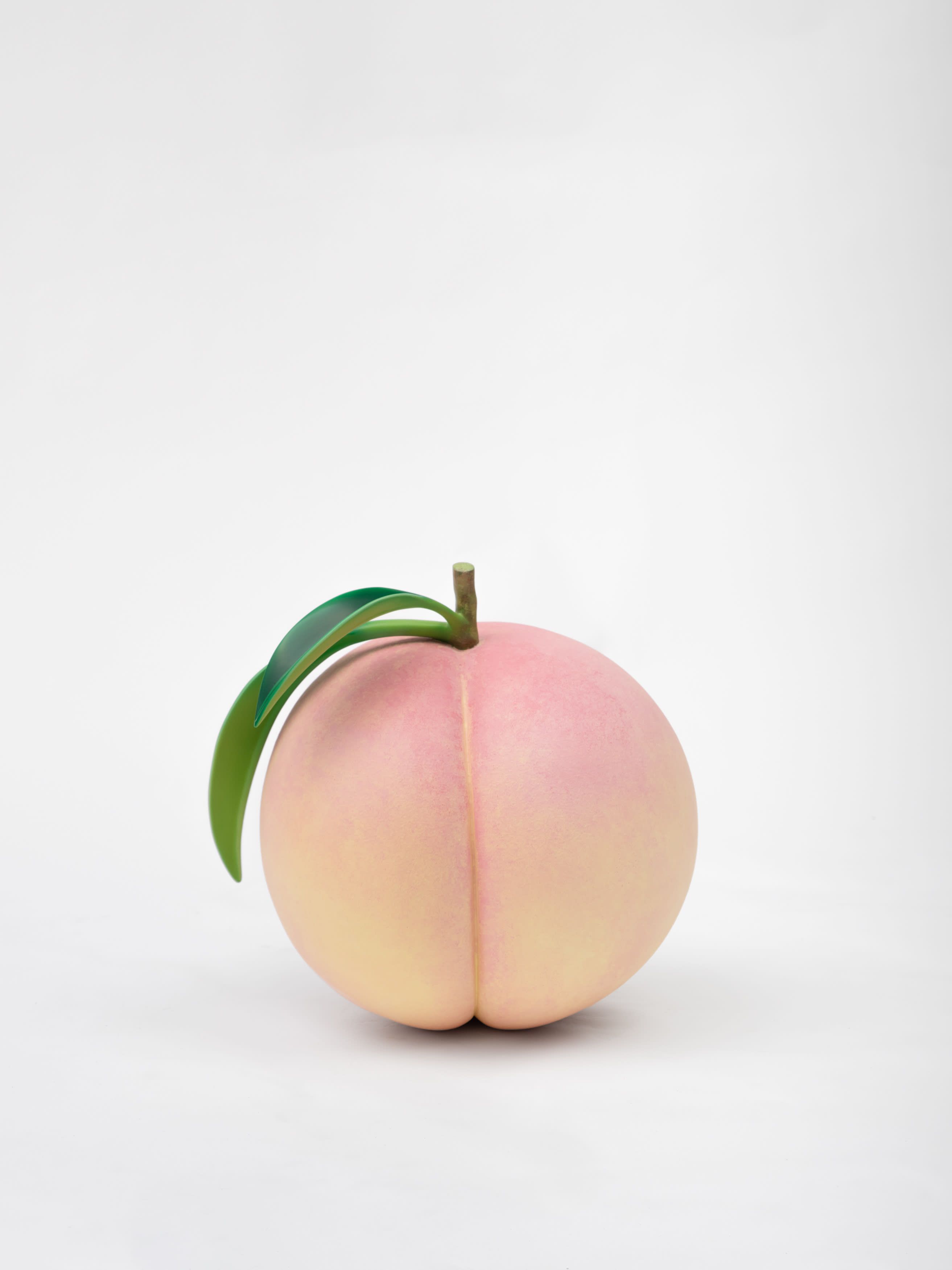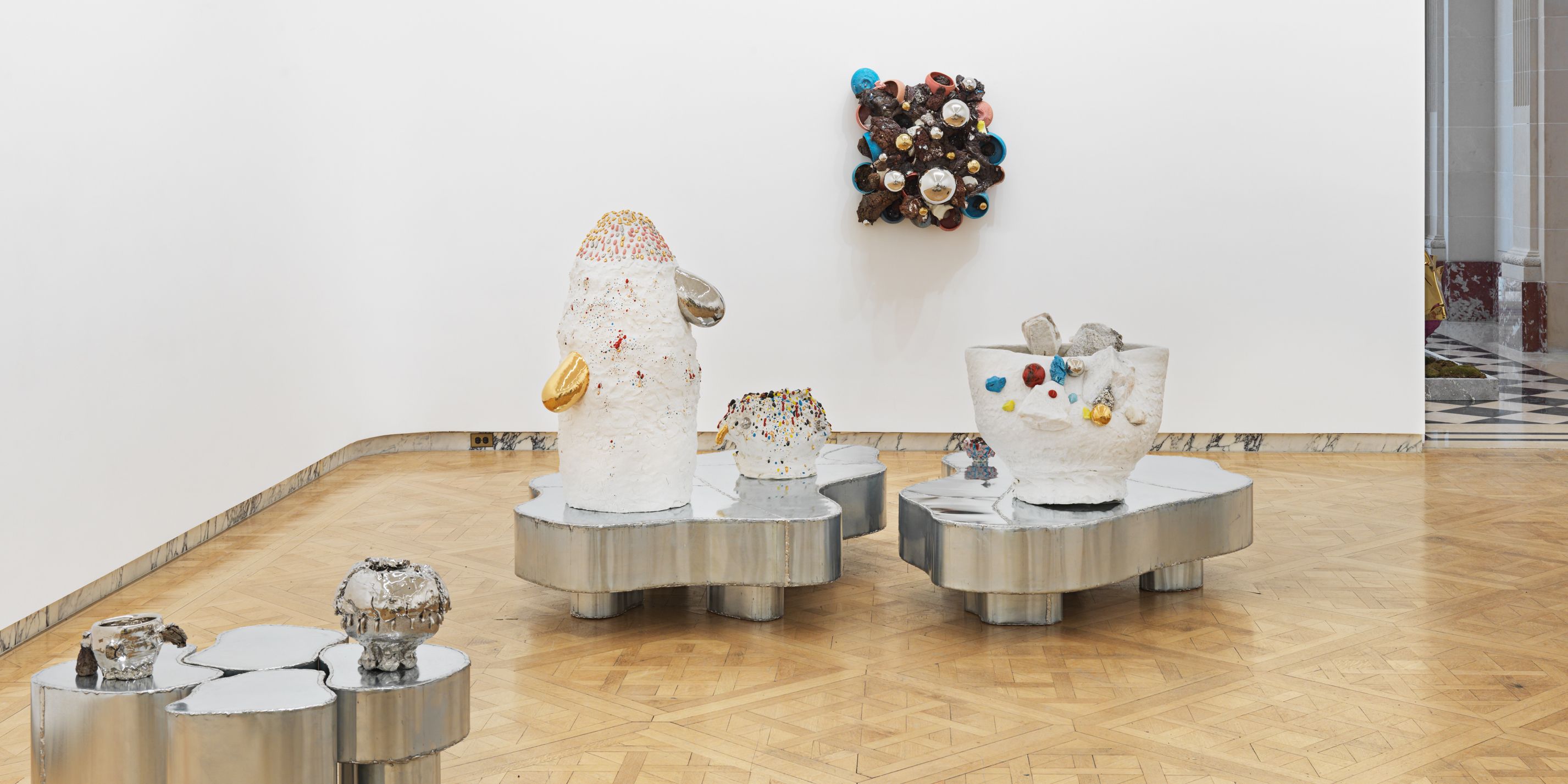
Together Shiyoze! (Let's Get Together!)
Kuwata’s fantasias in clay effervesce with verbs. A single work can simultaneously shine, pop, droop, shiver, bubble, peel, sweat, crack, calve, burst, shimmer, sag, and flake. – Garth Johnson
Installation Views
Artwork
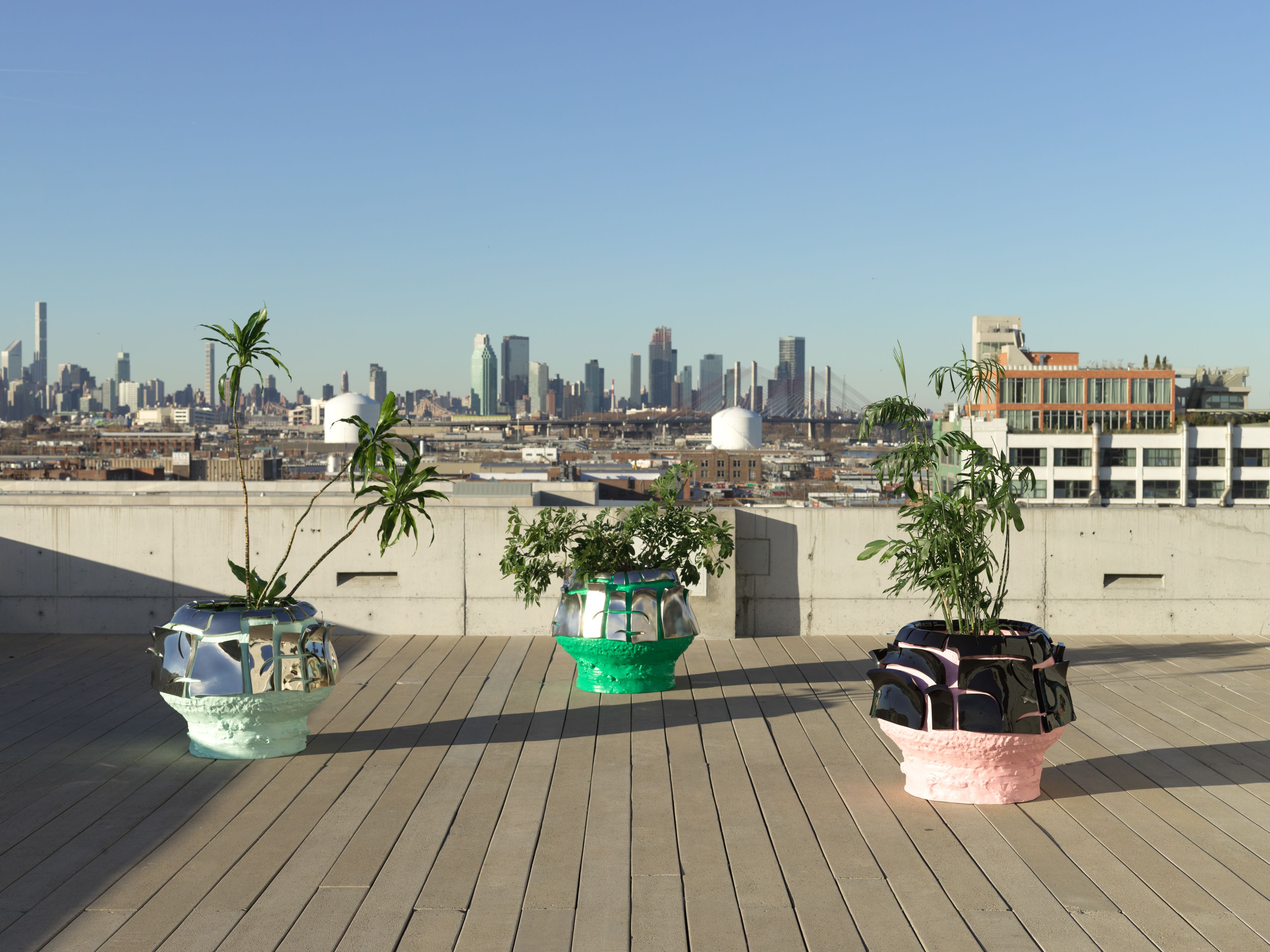
Takuro Kuwata: View to a Kiln
by Garth Johnson
In 1967, Richard Serra published his famed Verblist, an inventory of more than 100 verbs that he described as “actions to relate to oneself, material, place, and process.” The sheer abundance of Serra’s verbs, like “to heap,” “to flow,” and “to swirl,” reveal a multiverse of artistic possibilities, but also the artist’s curiosity about structure and limitations. Few artists working in the medium of ceramics take this lexicon to heart more than Takuro Kuwata. Kuwata’s fantasias in clay effervesce with verbs. A single work can simultaneously shine, pop, droop, shiver, bubble, peel, sweat, crack, calve, burst, shimmer, sag, and flake.
Kuwata’s promiscuous approach to form and surface has led critics to ekphrastic heights. Glenn Adamson used Kuwata’s work as the fulcrum of his 2019 essay “Rise of the Hyper Pot,” describing the ways that Kuwata commands eyeballs and short attention spans on social media in “the basking, acid glow of a computer screen.” Adamson uses Kuwata’s work to verbally flex in a jazzy slipstream of adjectives as he describes an untitled piece from 2018 as a “liquid landslide of bubblegum pink and sky blue, dripping down over a crunchy shell of egg-yolk yellow.”
Artist and critic David Stent’s 2021 essay “‘Blue-Slipped Stone-Burst’ – Seeing Destructive Plasticity in Takuro Kuwata” focuses on the seeming maelstrom of energy unleashed in the artist’s work, connecting the dots between Kuwata’s upbringing in Japan, love of tea ceremony, and the dance of destruction and creation in his works. Stent anthropomorphizes Kuwata’s work via nuclear body horror, noting the way his ceramic objects “shuck their own skins, peel or turn inside-out, their glazes raised like keloid scarring.”
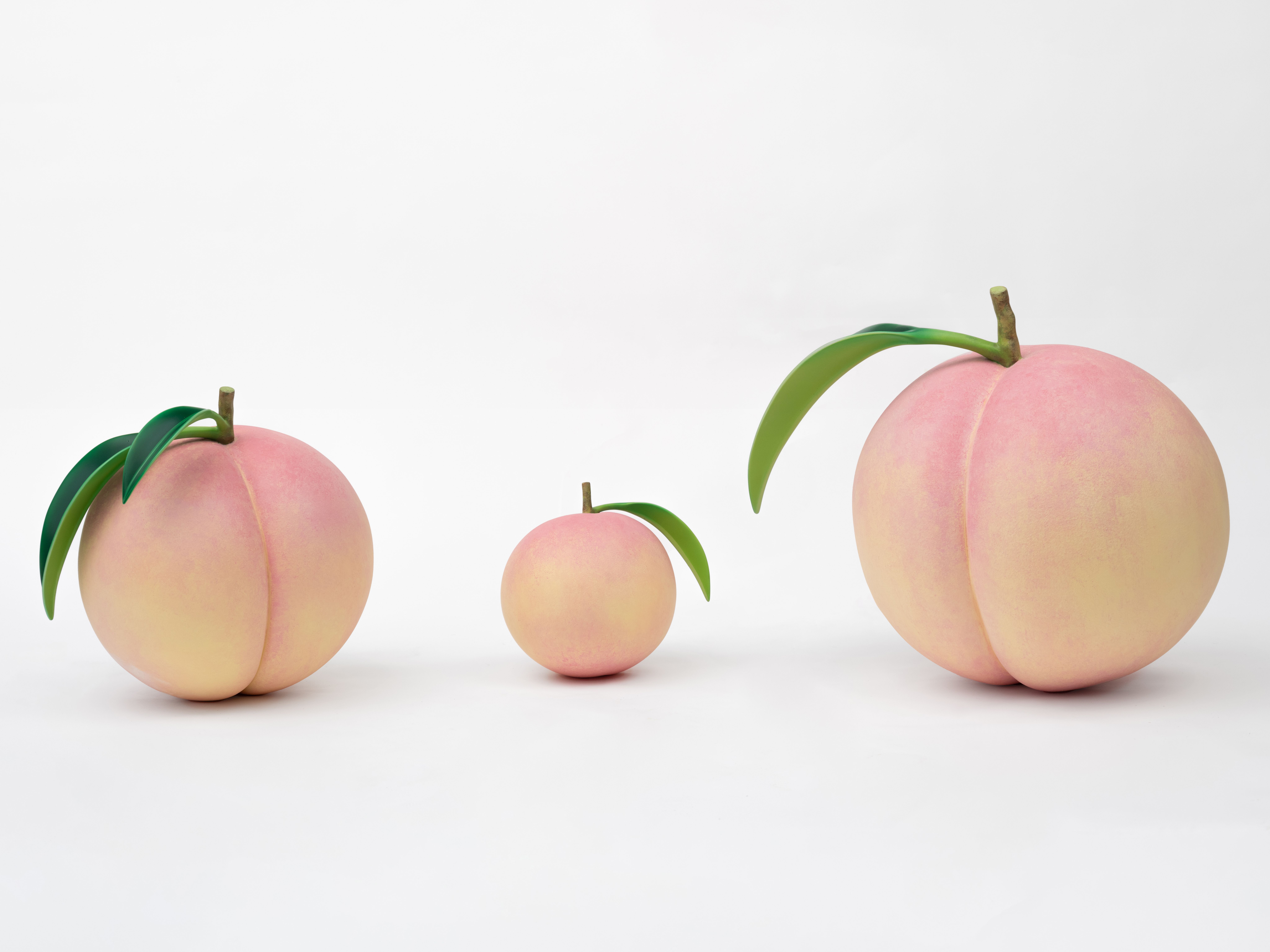
Takuro Kuwata, Peaches, 2024
Adamson takes note of Kuwata’s “tactical deployment of chance operations in the execution of the work,” a sentiment Stent echoes. Over the past two decades, Kuwata has steadily used his knowledge of ceramic materials and glaze to encourage unpredictable results. Reaching beyond the crazed surfaces and kintsugi repairs of venerated tea vessels, Kuwata has formulated a series of glazes that turn supposed flaws into the vessels’ greatest assets. Rather than using glaze to immaculately enrobe his forms, Kuwata’s glazes crawl back on themselves or flow unpredictably through pierced holes. It is easy to connect these “chance operations” to Dadaist games (exquisite corpse, cut-up poetry), or to name-check David Pye’s theory of “the workmanship of risk,” but the root of Kuwata’s love of unpredictability is much more relatable, lying at the heart of what it means to be a potter.
Since humans began firing clay figures over 25,000 years ago, creators have engaged in the shared anticipation of waiting for their work to cool to see its final state. Despite working in ceramics for decades, Kuwata has never lost his love for the drama of a kiln opening. When asked about setting up risky experiments with his pieces, Kuwata’s answer was straightforward:
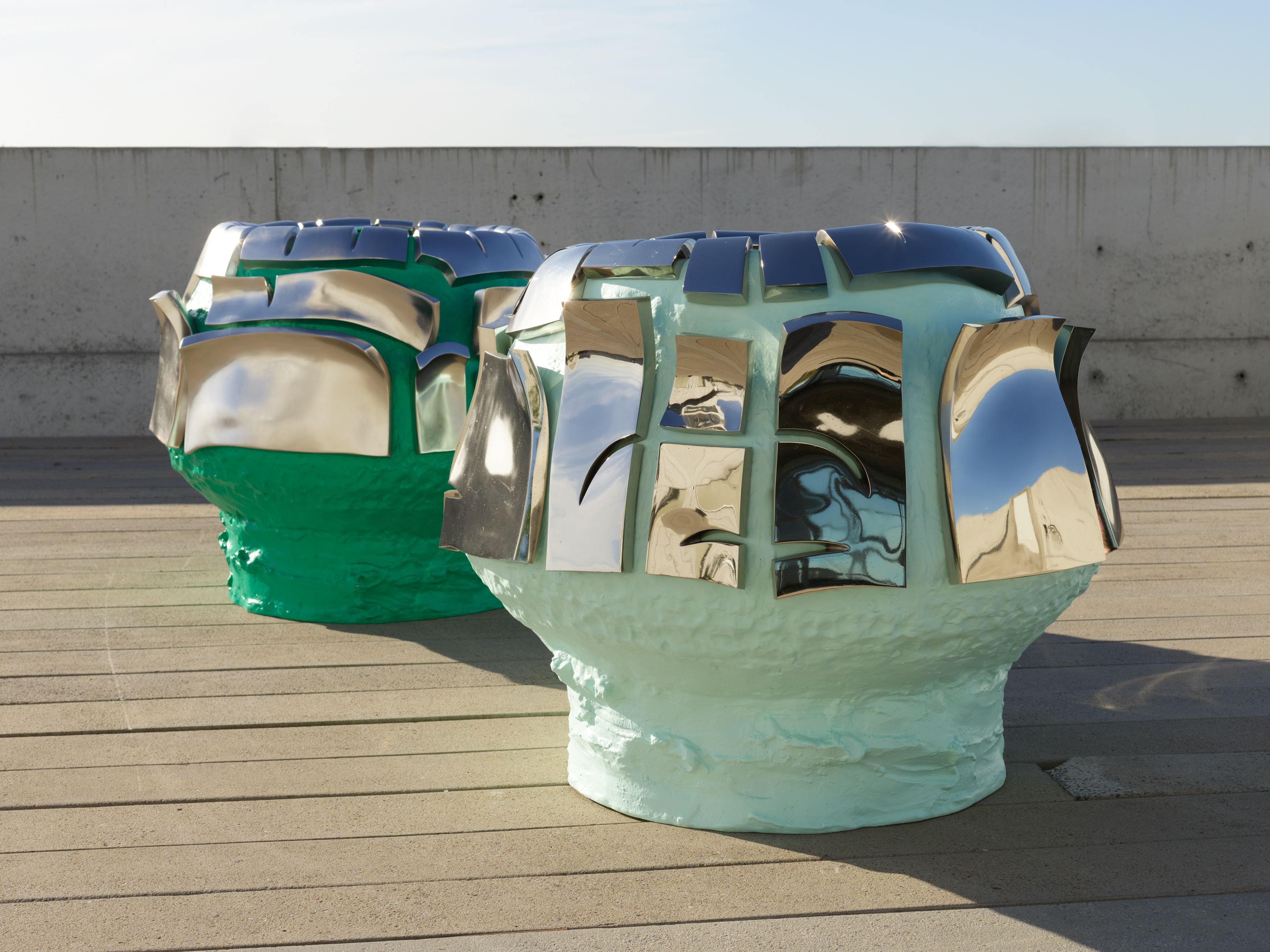
Takuro Kuwata, Chawan (Mint), 2024 & Chawan (Green), 2023
"In the ceramic process, everyone familiar with ceramics knows that the climactic moment comes when opening the kiln. Many people are drawn to ceramics because of this moment. It's been twenty-five years since I first encountered ceramics in university, and I've always felt this was the true essence of ceramics. Being captivated by this excitement has been a major factor in building my career, and I believe this feeling will continue within me indefinitely."
Kuwata is among the most thoughtful (and skilled) ceramic artists of his generation; he is certainly not averse to risk, despite the exponential growth in interest in his work. He doesn’t pay lip service to Japanese pottery traditions; rather, he has sought out a wide range of mentors and teachers throughout his career. Many ceramic artists begin their studies with traditional potters, then evolve toward contemporary ideas, but Kuwata started out at Kyoto Saga University of Arts, the wellspring of Japanese avant-garde ceramics. In Kyoto, Kuwata was exposed to the Sōdeisha movement, which initiated a radical break from function.
After graduation, Kuwata resolved to make a living as a functional potter and apprenticed for eighteen months with traditional potter Zaima Susumu. During his apprenticeship, he learned to dig his own clay and make traditional wood ash glazes, technical skills that still fuel his material investigations. In a left turn, Kuwata then studied at Tajimi City Pottery Design and Technical Center in Gifu prefecture, an upstart in terms of ceramic production (with roots dating back more than 1,300 years). Although it produces many wares associated with tea ceremony, like Oribe and Shino, Tajimi City is much more aligned with industry than Japan’s six ancient kiln sites. Drawn to its bountiful ceramic resources and a growing international cultural scene, Kuwata would ultimately settle in the region.
It was in Tajimi City that Kuwata was exposed to a panoply of practical and industrial techniques—and met scholar Seizo Hayashiya, a leading expert in tea ceremony who led him in object study with centuries-old tea wares, igniting a deep, lasting obsession. Kuwata credits Hayashiya with exposing him to traditions that allowed him to break free to create his own distinctive new works. In addition to bringing his own color palette and pop-cultural sensibility to his work, Kuwata has provided his own twist on tea ware techniques, like adding feldspar stones to his clay body that burst through during firing (Ishi-haze) and the crawling, crackled glazes perfected by National Treasure Toyozō Arakawa.
As his investigations into flaking, cracking, bursting, peeling, and fizzing progressed, Kuwata also challenged himself to increase his scale. When he began showing with Salon 94 in 2013, he exhibited Platinum Kairagi Shino Triangle (2012), a conical work in delicate porcelain measuring nearly six feet tall. Scaling one’s work presents many difficulties; Jackson Pollock created small drip paintings with thin strings of paint poured through a punctured can, but he used larger sticks and moved his whole body to fling paint from sticks onto his large works. Similarly, Kuwata pushes the envelope of his technical abilities to engineer his surface fractures and stone bursts from tiny fractures to giant fissures.
Although he has used 3D scanning and fabrication to create some of his cast metal work, the large cast metal Chawan (tea bowls) in Together Shiyoze! were carefully modeled in clay, including the peeling glaze surface. Instead of taking away the drama of opening the kiln, Kuwata’s cast works provide multiple opportunities to introduce astonishing elements that can’t be achieved in clay and glaze. Kuwata modestly states that he thinks he “has been able to expand a little the world I have seen in the palm of my hand or on a table.”
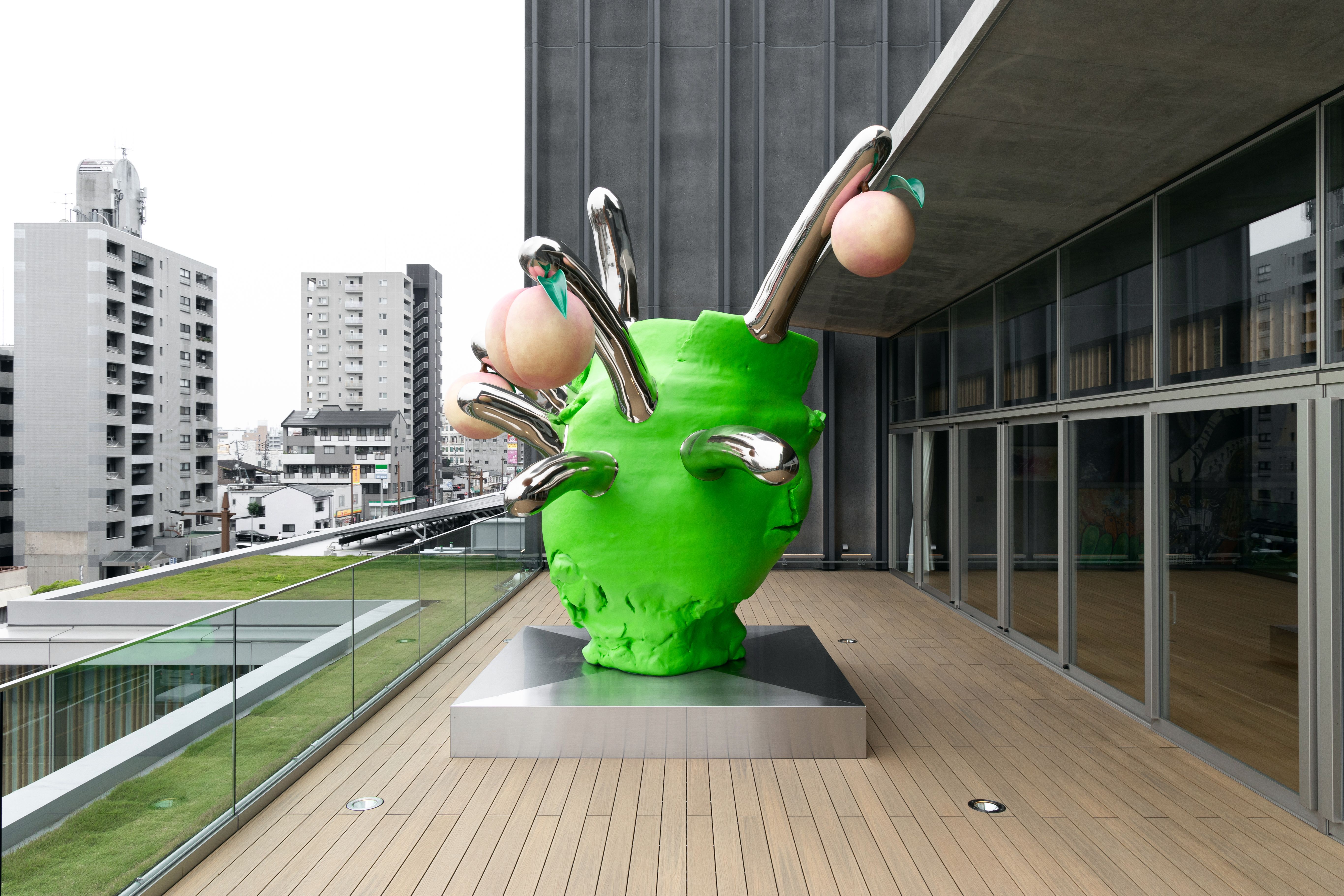
Takuro Kuwata, Okayama Performing Arts Theater, 2023
Staying true to his work’s roots in tea ceremony’s ability to stretch time and confound expectations, Kuwata has also begun to introduce realistic trompe l’oeil objects that both collide with and strangely complement his abstract language. In 2023, Kuwata was commissioned by the Okayama Performing Arts Theater to create a public work of art. Kuwata came up with the idea for a larger-than-life Chawan with realistic peaches sprouting from signature platinum-coated appendages to pay tribute to the region’s famous peaches—both a literal agricultural product and a symbol of longevity, hospitality, and generosity.
Kuwata’s trompe l’oeil peaches aren’t the only unexpected visitors to his hitherto abstract works in his new exhibition. Since the Meiji Restoration in 1868, traditional Japanese crafts and ceramics have engaged in a delicate dance with western imagery. In the 1920s, Western-style playing cards and Pierrot-style clowns (among others) became recurring motifs on everything from silk fabric to Noritake porcelain. Stylish women of the era gleefully mixed modern with traditional, combining permed and bobbed hairstyles with traditional garments that incorporated modern fabrics.
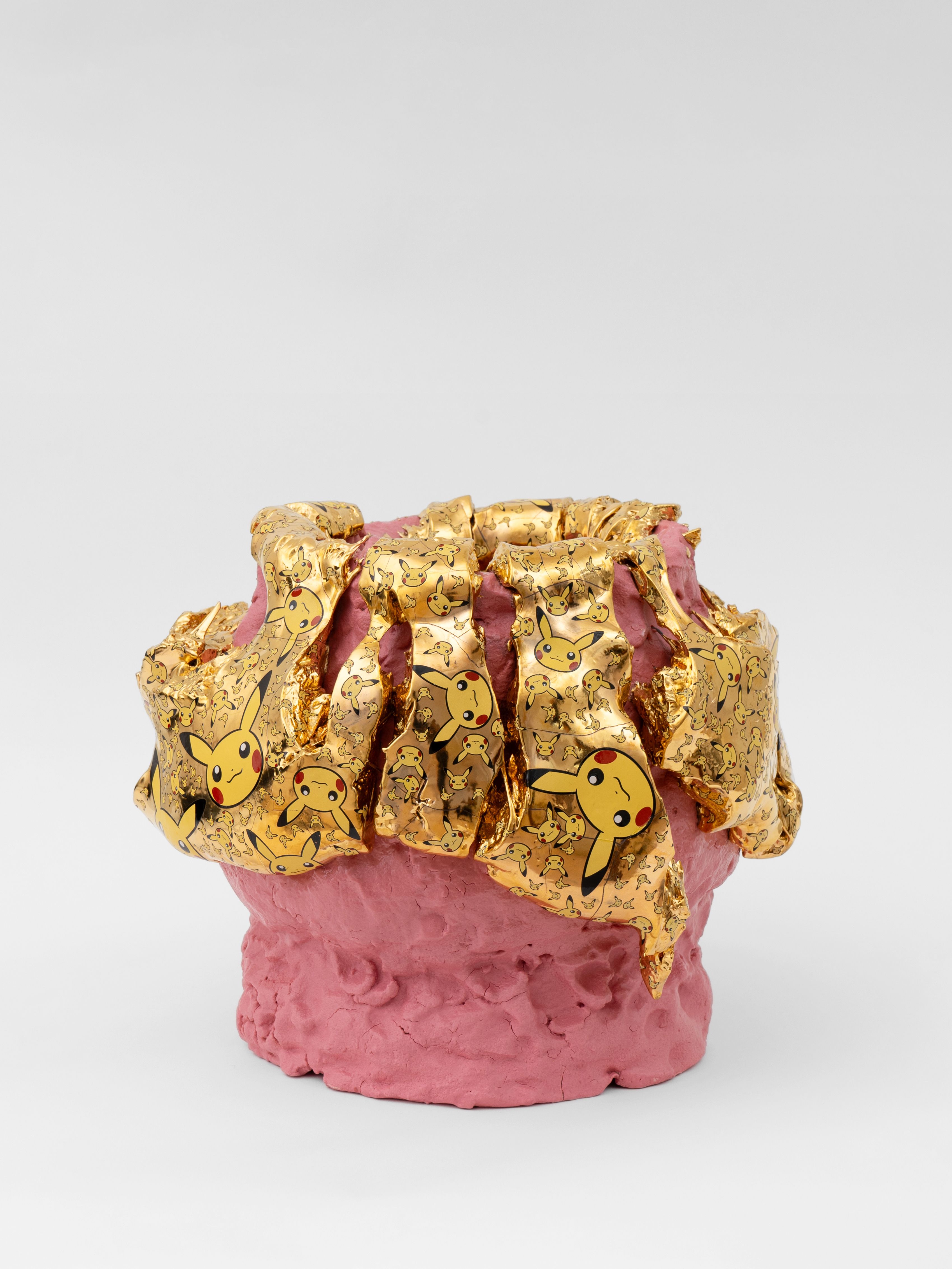
Takuro Kuwata, Chawan "Pikachu", 2024
In a much more playful spirit, since 2023 Kuwata has participated in the ongoing exhibition organized by the National Crafts Museum in Kanazawa entitled POKÉMON X KOGEI, featuring twenty artists working in craft materials creating work riffing on Pokémon. The exhibition has also traveled to Azabudai Hills Gallery, Tokyo, and Japan House, Los Angeles. Kuwata contributed a group of candy-colored porcelain vessels accented with gold and platinum dotted with a menagerie of yellow Pikachu faces. Like Kuwata’s peaches, this unexpected pairing causes viewers to do a double-take, invariably bringing smiles to their faces. For Together Shiyoze! Kuwata has continued to draw on Pikachu in a series of new works—this time as (relatively) subtle additions to his kairagi.
With their metallic bling and candy-colored palette, Kuwata’s works surely are hyper pots. It is no less accurate to label Kuwata himself a hyper potter. Although his works are difficult to locate in space and time, Kuwata himself is an artist who possesses the hyper-embodiment of the qualities of a superior potter. Over three decades, he has acquired hard-won technical skill and knowledge of his materials; he is driven by the thrill of discovery, which often comes at great risk; and he has sought out both great teachers and a vibrant place to live and work. Like all great potters, he is a voracious student of tradition, an inclination he uses to drive his work. Though he now experiments with new materials on an ever-widening stage, it is evident that he is still driven to new achievements by chasing the indescribable feeling of opening a kiln.
Press
Ceramics Now
Galerie
Something Curated
The Sunday Times
